#this is one of the best things this franchise as ever done and its official
Text
I love when they embrace 80s skeletor being silly and the evil warriors having their little hobbies like merman doing tiktok dances give me more of that
#skeletor#motu#masters of the universe#motu filmation#this is one of the best things this franchise as ever done and its official#evil-lyn#merman#trap jaw#beast man#he man
15 notes
·
View notes
Text
Dirk Nowitzki's journey from Germany to Dallas to the Hall of Fame
By Steve Aschburner
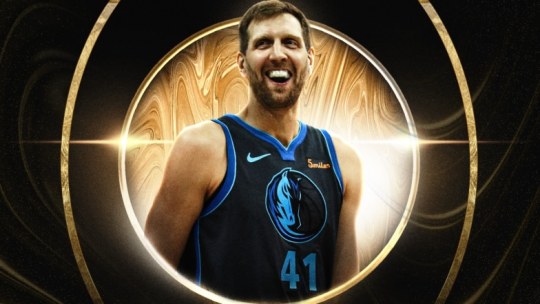
His shot became his signature, that signature became a statue. It’s planted there now for the long term, emblematic of Dirk Nowitzki himself, who came to the Dallas Mavericks a quarter century ago and never left.
Resplendent in white bronze, 24 feet high, over on the right wing of Victory Plaza outside the American Airlines Center, Nowitzki is immortalized in the shooting form that earned him so many of his 35,223 points (regular and postseason). It earned him a bevy of admirers, too, among peers and rivals like Kobe Bryant, Kevin Durant and LeBron James who adopted the big German sharpshooter’s one-legged fadeaway as both a tactic and an homage.
“The Dirk,” as that shot has been dubbed, is here to stay. Both as a weapon – “the equivalent of what Abdul-Jabbar did with his sky hook,” one opposing coach said the other day, both awed and irritated by its effectiveness – and as a tribute, frozen in time, the distillation of 21 seasons and 1,667 games logged with the only NBA team for which he ever played.
One city, one franchise? Only Utah Hall of Famer John Stockton (1,686) ever played more.
It’s funny, though, how a player celebrated for staying planted in one place for more than two decades could have traveled so far and covered such ground in the process. It showed in his game, the way he developed, refined and tweaked his unique style until he had dragged the whole position with him.
“Watching him play, I remember thinking, he’s just getting better and better and better,” said Hall of Famer Kevin McHale, one of the NBA’s greatest power forwards. “And he really changed things around the way the position is played.”
It showed in Nowitzki’s influence, a European prospect who came over younger than most of the imports who preceded him and shined so brightly that, well before he was done, he was regarded as the best player ever from that continent. Fifty-one Most Valuable Player trophies had been handed out in NBA history before Nowitzki won the 52nd as the first Euro. Now guys from Greece and Serbia have taken home four of the past five.
“Every tall kid around the world saw Dirk,” Mavs owner Mark Cuban said, “and realized they could play basketball and not have to be a back-to-the-basket center. Dirk paved the way for players of any size to be multi-positional and have a variety of in-game skills.”
Certainly Nowitzki, 45, moved geographically in a career that spanned half his life, from Wurzburg, Germany, to Dallas and now to Springfield, Mass., where he will be inducted Aug. 12 into the Naismith Memorial Basketball Hall of Fame with the Class of 2023. He has been there once before, in 2018 when a pair of his point guards – Steve Nash and Jason Kidd – were both enshrined. This time, those two will be official Hall presenters for their tall teammate. Nowitzki’s guest list for the weekend – after wife Jessica and their kids Malaika (10), Max (8) and Morris (6) – ran “a couple hundred, I think” at least in invitees, if not attendees.
His speech is pretty much done. “It’s been fun,” Nowitzki told NBA.com recently by phone from Germany. “Really what you’re doing, you’re reflecting on the whole journey. Who’s meant the most, who’s done what. I’ve actually found it cool to sit down in the evening after everyone’s in bed and I sit here for an hour and think about that stuff.
“There will be a little nervousness. But I’m also going to enjoy standing up there and looking out at this amazing crowd of family and friends and great athletes. I’m going to try to enjoy it as much as I can.”
From Germany To Dallas
His father, Jörg-Werner, competed internationally in team handball. His mother Helga and his older sister Silke played basketball.
“Growing up I was always in gyms,” said Nowitzki, who mostly played handball and tennis. “I was tall, and I played basketball in school. I had a cousin who was with a club team, so I went one time to practice and I got hooked. I wasn’t very good but I could move pretty well for a big guy and I had decent touch for my size. It didn’t come that hard for me, and I loved it from Day 1.”
After joining DJK Wurzburg, Nowitzki was spotted by Holger Gerschwindner, a former national team player turned physicist, trainer and coach. Gerschwindner offered to work with the lanky lad, got the family’s permission, then began to hone every aspect of Nowitzki’s game.
One part guru, one part Svengali to Nowitzki’s Trilby, Gerschwindner favored unorthodox techniques and drills to coax out his players’ abilities. For instance, he would invite an old friend who played the saxophone to the gym, then instruct Nowitzki and other teen players to dribble and move in rhythm with the music (“dance the game,” he termed it). He gave them books and swapped out weight training with morning rowing on a local lake.
“Holger was a little bit mystical figure in Dirk’s orbit who thought completely out of the box,” said Golden State assistant coach Ron Adams, an international scout for Portland in 1998. “He’s a little full of himself and some people look sideways at him, but they let Holger do his thing for the most part in Dallas.”
At 19, Nowitzki had developed enough to be invited to the Nike Hoop Summit, an All-Star event pitting the top international prospects against a squad of U.S. high schoolers. The game was held in San Antonio, but the foreign players convened and practiced in Dallas.
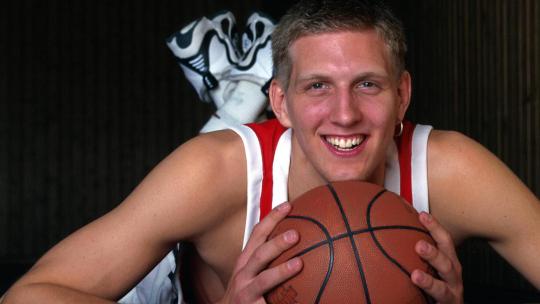
Donnie Nelson, son of Mavericks coach Don Nelson, served as a volunteer assistant coach for the overseas team. A stint with Athletes in Action playing internationally during his time at Wheaton College piqued the younger Nelson’s interest in the NBA potential of foreign-bred players.
“We scouted Europe more than anybody, really,” Don Nelson told NBA.com last week, calling from his home in Maui. “Donnie got the international team to work out at the YMCA in downtown Dallas. So for a full week, I’m watching Dirk work out. He was the most unbelievable young player I’d ever seen.”
Other teams perked up after Nowitzki scored 33 points with 14 rebounds to spark his team’s upset of the Americans, including Al Harrington, Quentin Richardson and Rashard Lewis. But as the 1998 NBA Draft approached, the Nelsons were ready.
“We hid Dirk for several weeks before the draft,” Nelson said. “We made a commitment that we were going to draft him. We just wanted to keep him from going anywhere else to work out. He was going to be ours. He was happy with that. So he hid for a week in Donnie’s basement.”
The Mavericks held the No. 6 pick that year but had more ambitious plans than simply taking Nowitzki at that spot. They arranged a deal with Milwaukee at No. 9, in which Dallas picked Michigan’s Robert (Tractor) Traylor and the Bucks took Nowitzki. They knew Boston had interest, leaving the Celtics to draft Paul Pierce at No. 10.
The Bucks also sent the No. 19 selection, Pat Garrity, to Dallas, which promptly packaged Garrity to Phoenix for a young point guard named Steve Nash.
The Early Years

The 1998-99 NBA season is one that lots of folks would like to forget. First of all, there was no 1998; a labor lockout wiped out training camps and the season’s first two-plus months. The new CBA that was wrangled in January was followed by a frenzied 50-game schedule that began in February. Summer leagues, orientation, September individual work and scrimmages, everything an incoming rookie needs for that first difficult season was off the table.
Then there was Nowitzki, who had just turned 20 and, by his and Gerschwindner’s admission, was probably one or two years ahead of schedule in trying the NBA.
“It was right after they drafted me,” Nowitzki said, “that I had the doubts. Should I go to the NBA? I was skinny, I had played second division in Germany. Can I make this jump?
“I talked to Nellie and Donnie. I got to meet Steve and Mike [Finley], and they all assured me, being a young team, we could grow together. So before I left from home, I said I’d come. But I wasn’t able to sign a contract because of the lockout, and that worked out kind of perfect for me.
“I got to stay home. I got to train with Holger. I got to play first division in Germany for a couple more months and really developed my body a little more, my game. Then I got the call in late January from Donnie. ‘Hey, the season is on. Get your butt to Dallas!'”
Let the record show, in his NBA debut on Feb. 5, 1999, Nowitzki shot 0-for-5, made two free throws, got no rebounds and passed for four assists in 16:20 of an overtime loss to Seattle. That first season, he averaged 8.2 points and 3.4 rebounds while shooting 40.5% overall and 20.6% on 3s. The Mavericks finished 19-31 but the Nelsons made good on their commitment, using Nowitzki in 47 games and starting him in 24, including the final 14 when his minutes doubled to 32.9 per game.
“Super nervous and anxious,” he recalled. “I didn’t know what to expect. We had a week of training camp maybe. I didn’t know all the plays or the defensive calls. Then we had five or six games in a week? It was insane. Looking back, it was good for me to get adjusted and learning. But it was tough to go through.”
There was one bright side: Nash. The unheralded playmaker from British Columbia by way of Santa Clara had been buried in the Suns backcourt his first two seasons. He and the German rookie clicked instantly.
“Well, they both loved to drink beer, so I’d say they clicked,” Nelson said, laughing. “They hung out. They both were single at the time.”
It was a lot more than that, Nowitzki said.
“We came to Dallas on the same day,” he said. “We didn’t have any friends. We lived in the same apartment complex. His family is from Europe, and he loved soccer. So we had that and we completely bonded. We went to dinners. I was feeling homesick so he’d take me to movies, out to eat.
“On free nights, we’d go back to the gym, train, lift, run, shoot, play 1-on-1. We just worked our way to be better and better every year. Steve knew the league, the routines and how to get ready. So I learned a lot from him.”
In his second season, during which Cuban bought the franchise, Nowitzki doubled his output to 17.5 points and 6.5 boards while shooting 46.1% overall and 37.9% from range. He averaged 21.8 in 2000-01 as he and Nash became a devastating pick-and-pop combo, and the Mavericks won 53 games in the first of 11 consecutive years of 50-plus victories. The next season, the guard and the forward were All-Stars.
“The crazy part still is, when he got to the NBA, people were upset that he didn’t play like a traditional center,” Cuban said. “They asked why he wasn’t a rim protector. It’s insane to look back at that now.”
Nash went back to Phoenix in free agency in 2004. Finley was gone a year later. Jason Terry came in, and later Kidd. Their coaches changed, from Nelson to Avery Johnson to Rick Carlisle. But Nowitzki was the cornerstone and he was on a roll. He went to 11 All-Star games in a row and 14 overall. He was a 12-time All-NBA selection. In 2006 he led Dallas to the Finals for the first time. The next season, the Mavs won 67 games and Nowitzki won his MVP award.
The coaching changes, never easy, panned out for him. Nelson tapped into Nowitzki’s rare combo of size and ball skills, using him as a lengthy small forward. He was 26 when Johnson took over, demanding more toughness, post work and even defense from his offensive star. Carlisle, who coached him from 2008 until Nowitzki retired in 2019, was a combination, wanting “a lot of free-flow offense and a lot of structured, detail-oriented defense.”
“I always thought, what if I had gone someplace else? Bulked me up and just put me under the basket and made a center out of me. With Nellie, that never happened,” Nowitzki said.
Johnson perfected Dallas’ use of Nowitzki at the “nail,” the center of the free-throw line where he posed the maximum threat to opposing defenses. It enabled him to punish smaller defenders that would switch onto him, without the time and grind to work into the low post, and likely draw a doubling big man.
“The spacing was good,” he said. “I wasn’t the greatest passer, but at least this way, I knew where my spot-up shooters were. I knew the big guy was in the dunker spot underneath. And if nobody came to double, I was going to just shoot over the little guy.”
As for Carlisle, that partnership produced the highlight of their careers and Cuban’s tenure, Maverick fans’ warmest memories, one of the city’s happiest sports celebrations and a reason so many junior-high kids named Dirk are running around.
“I came in the fall of 2008,” Carlisle said last week, “and the main thing was, ‘Dirk’s got about 4-5 years in his prime. We’ve got to figure out a way to win a championship."
‘Now I’m The Old Guy’
Nowitzki was 14 years old when Michael Jordan, Magic Johnson, Larry Bird and the rest of the Dream Team colonized the basketball world during the 1992 Olympics in Barcelona, Spain.
“I was already an NBA fan and with Jordan winning his first championship in 1991, I became a huge Bulls fan,” Nowitzki said. “Then obviously ’92 happened. I had posters in my room of [Charles] Barkley, Shaq later on, Jordan of course, Bird.”
He had a poster, too, of Detlef Schrempf, the native of Leverkusen, Germany who was drafted eighth overall in 1985 by an earlier Dallas regime. Schrempf, a 6-foot-10 forward, grew up in Centralia, Wash., and spent four years at the University of Washington. He played 16 seasons, averaging 13.9 points, 6.2 rebounds and 3.4 assists per game. Later playing for Indiana, Seattle and Portland, Schrempf made three All-Star teams, one All-NBA squad and twice was named the NBA’s top Sixth Man.
Of the 27 NBA players born in Germany, Schrempf is the closest precursor to Nowitzki.
“Of course, Detlef was also one of my favorites. Everybody in Germany knew how good he was,” Nowitzki said. “And then my first game in the league, it was against Seattle and Detlef. The way he treated me there, introduced me to his family, he couldn’t have been nicer. He gave me his phone number and told me to call if I ever had any questions.”
Other notable European players have made their marks before or since. Players such as Sarunas Marciulionis, Drazen Petrovic, Vlade Divac, Andre Kirilenko, Rik Smits, Toni Kukoc and Tony Parker right on to Domantas Sabonis, Luka Doncic and Nikola Jokic.
Now Nowitzki is their flag bearer, a role that makes him almost as proud as when he carried Germany’s flag in the opening ceremony of the 2008 Beijing Olympics.
“I got to play with [Mavs forward] Maxi Kleber my last two years. How special is that, a kid from my hometown comes to us? We spent a lot of time together, before the season we trained together and he had a lot of questions,” Nowitzki said.
“And [Toronto guard] Dennis Schröder, when he got in the league, he actually worked out in Dallas before the Draft. I went there, got to see him, got to meet him and gave him my number. Told him when he had any questions to call me up. So we’ve basically been in contact his entire career.
“Now I’m the old guy. It changes so fast. Twenty years have flown by.”
Dirk Stays With Dallas, Wins 2011 Title

This bond of Nowitzki with Dallas, Dallas with Nowitzki, is something to savor now, full of giddy moments and fuzzy nostalgia. But it was forged in hard times, ordeals that are only appreciated in retrospect and even then with a wince. The early days with the Mavericks had been a challenge for Nowitzki, but nowhere close to what he and the team’s fan base endured a few years later.
In 2005-2006, Dallas won 60 games. Nowitzki averaged a career-best 26.6 points, finished third in MVP balloting and – with teammates such as Terry, Josh Howard and Jerry Stackhouse – once again was the lone All-Star.
“Dirk played with Jason Kidd near the end of his career and Jason was still a great player, but he did not play with a bunch of Hall of Fame players in their prime,” Carlisle said. “Nash left before he really hit his stride. Dirk carried an amazing load with the Dallas Mavericks over a period of two-plus decades that may never be rivaled again.”
Nowitzki was his usual stellar self in leading the Mavs in the 2006 playoffs to series victories over Memphis, San Antonio and Phoenix, with his Game 7 work to beat the Spurs overtime in the West semis most remarkable. He and the Mavericks took a 2-0 lead over Miami in the Finals. Then Dwyane Wade happened, the young Heat star binging at 39.3 points and shooting 73 free throws over the final four games.
The Mavericks regrouped to win 67 games in 2006-07. They were so good, with Nowitzki as MVP, they dragged Howard to his only All-Star selection. Heavily favored against small-ball, eighth-seeded Golden State, Dallas was upset in six games, including defeats by 12, 18 and 25 points. Their old mastermind Nelson was working the Warriors’ sideline at that point, and his insider defense on Nowitzki saw the Mavs star score just eight points on 2-of-13 shooting in the elimination game.
“It would have been unbelievable to win in ’06,” he said. “And then losing in the first round in ’07 to the Warriors, those were some tough, tough losses. Gut-wrenching, to the point where I was embarrassed and disappointed and didn’t want to leave the house for a couple weeks.”
In fact, the only thing that blocked him from a hasty retreat to Germany that spring was the NBA, asking him to stick stateside for a couple of weeks until the MVP presentation.
Another first-round loss in 2008, to New Orleans this time, cost Johnson his job. Carlisle came in but two more abrupt exits followed, to Denver in the 2009 semis and to San Antonio in 2010.
Nowitzki was 32 and, for the first time in his career, a free agent. Three years earlier, a perennial All-NBA forward had accepted a trade in hopes of winning a championship elsewhere: Kevin Garnett left Minnesota after 12 years and insufficient help to finally win in Boston. Was Nowitzki next?
“I always wanted to make it happen,” Nowitzki said. “I met with Mark [Cuban] and we both got a little emotional about what we’d been through together. And he said, ‘Let’s finish this together,’ and I was like, ‘I don’t want to be anywhere else.’ I ended up signing a four-year deal and we won a championship in the first year.”
The 2010-11 Mavericks did more than that. They delayed and possibly altered the trajectory of LeBron James’ grandiose Super Team plans in Miami. The “not one, not two, not three…” hubris of that initial public appearance of James, Wade and Chris Bosh became the thud of “not one” when Dallas and Nowitzki beat the Heat in six games.

Said McHale: “Kidd was really, really smart. Just knew how to play. Some of the guys were older, too. They had a blend of guys who just played so well together. They would do this 2-3 zone when I was [visiting Carlisle] in camp and I told Rick, ‘Your zone sucks. You’ve got to stop using that.’ Hell, they played that zone in the Finals. They had a bunch of high-IQ guys. And pro’s pros. They were not going to beat themselves.
“But the thing I remember the most was Dirk making these unbelievable shots down the stretches of games. He’d make a crazy shot to give them breathing room all the time.”
At this point, Nowitzki believes the elation of 2011 never happens if not for the heartbreaks that came before.
“In 2011, I was the finisher I needed to be in the final moments,” he said. “In ’06 and ’07 I just wasn’t quite there yet to make the big baskets. It wasn’t fun to go through those years when we were favorites but it’s part of my journey and it made me a better player and person for sure.”
Nobody quibbles with that last part. Nowitzki’s lack of drama and pretense drew mentions time and again from people contacted for this story.
“He was the greatest superstar teammate that I’ve ever seen,” Carlisle said. “He had a really humble demeanor, he knew who he was, he knew what his responsibility was.”
Shawn Marion, the 2011 teammate who refers to Nowitzki as the “7-Foot Rainbow Assassin,” also said: “His ego never got in the way of what the biggest goal was. He’s a quiet leader. And he had a bit of a joker side to him too.”
And over the years, with Nowitzki now focused on family, a low-demand Mavericks consultancy and a relaxed TBD future, those close to him have reconciled the global icon vs. Mavericks fixture split.
“Dirk became very Americanized,” Carlisle said, “where Germany and Europe could feel like he was theirs, and the people of Dallas could feel like he was theirs. And no one needed to fight about it.”
2 notes
·
View notes
Text
My First Impressions of Metroid Prime Remastered... Way Better Than I Thought!

It's been over 20 years since Metroid Prime originally released on the Nintendo GameCube, and many will argue that it's one of the best games ever made. Its focus on exploration, fights, and scanning features combined with the classic Metroid formula definitely makes it a game worthy of that title. It was way ahead of its time.
But its time has come once again! Metroid Prime has been faithfully remastered for the Nintendo Switch with new controls and visuals- and extra features I didn't expect! What do I think after sinking a few hours into it? Read on and I'd be delighted to share!
My story with Metroid Prime goes on quite a few years, and it all started when I was living in my old neighborhood as a kid. The Metroid Prime Trilogy game was always that one strange Wii game my neighbors had. Whenever I saw it, it stuck out amongst the other white cases, notably because it had a Steelbook case. I had played Echoes' multiplayer mode with friends while sleeping over, but that was really it. That is, until I was able to get the game. The neighbors' father had given it to me after they got rid of their Wii system. My mom insisted on paying, but he was kind enough to let me keep it for free.
Alas... as much as I liked the game, I never got too invested. I would always play a couple of hours of the first game, get lost, then stop. I would pick it back up some months later but I wouldn't be able to figure out where I was and where I had to go. It was a shame, as I really liked the controls on the Wii, and I was still interested in the series. I even tried the GameCube version when I got my copy of that, but that didn't help at all, especially with those controls.
Fast forward to these modern times though, and I now own the first game once again on my Switch. I chose to get it digitally, as I didn't want to wait to get the physical copy. And let me tell you... I already had high hopes from what I read about this remaster before, but this still blew me away.
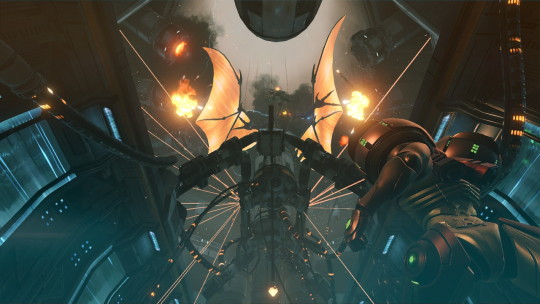
This is a complete graphical overhaul of that original 2002 game, with incredible lighting and textures that I haven't even seen before on a Switch game. And it achieves this without even dipping to 720p or below. It's easily the best-looking Switch game I've ever played. It even feels great to play, too.
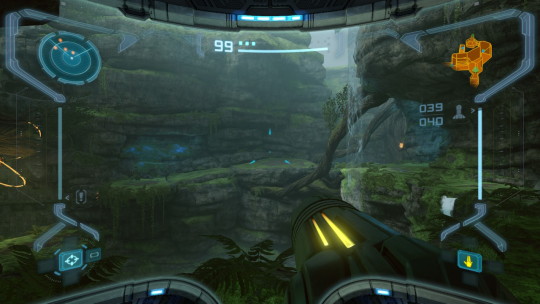
For those unaware, Metroid Prime is a first-person shooter/exploration game similar to the other 2D-style games in the franchise. You search a world for suit upgrades while fighting enemies, and each upgrade can allow you to explore a new area. And if you're a bit stuck, just backtrack- there's surely somewhere new you can go to with all those new upgrades. Never think you're done with one area just because you moved on to the next. Scanning enemies for their weaknesses is also a big key factor in this game, and necessary for 100% completion.
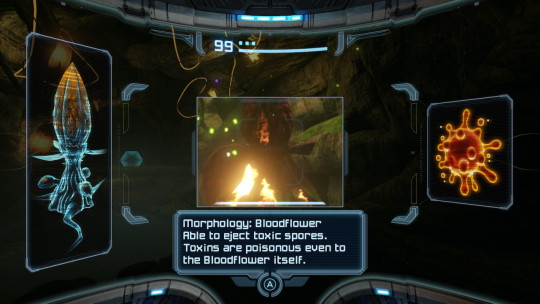
There are several ways to play this game now, controls-wise. There are options to go for the classic GameCube-style controls and Wii pointer controls, but now for the first time- you can officially play Metroid Prime in true dual-stick first person shooter fashion. Playing that way with the lock-on ability is a bit broken, but it's the most comfortable way for me to play this game. It was the one thing holding me back from continuing on the Wii (well, that and I just keep forgetting), and now that problem just isn't there.
Metroid Prime Remastered has a few new features and options that I wasn't entirely expecting, either. In the main menu, you're able to view models of enemies and suits and listen to songs from the game, how much is depending on how far you've gotten in it. Something I had no idea would be included at all was the European and Japanese-exclusive narration for certain scenes. These were entirely new to me, and I completely forgot they existed until now. Upon starting my playthrough, I decided to opt for the European narration. From my understanding, it's only in the beginning and end of the game, but from what I heard when I started, it's that perfect early-2000s action movie narration. Cheesy, but very cool.
One thing I did notice, as many others have, is that the bonuses from linking Metroid Fusion have been removed. In the GameCube original, if you linked your copy of Fusion with a Game Boy Advance/GameCube link cable, you could unlock the Fusion Suit (if you beat Prime) and a playable version of the original Metroid (if you beat Fusion). The latter being taken out makes sense, it's literally on the NES Switch Online app, but the Fusion suit would have been a nice inclusion still. Oh well, maybe when Fusion gets added to the GBA app or something.
At the end of the day though, Fusion suit or not, this is still one incredible game. This will definitely hold fans over until Metroid Prime 4 releases. Here's hoping that a remaster of 2 and 3 are in the works- and will be as good as this one.
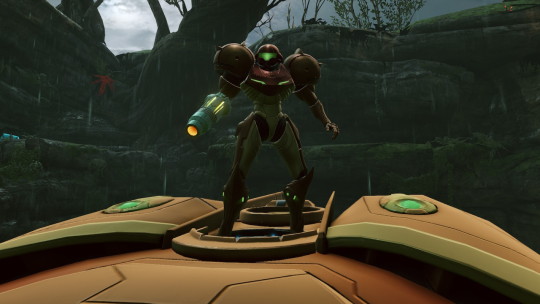
Thanks again for reading! Been putting this off for a bit, but I'm glad I finished it now.
Next up: Remasters Shouldn't Be Lazy, Broken Ports! Why Have So Many Been Like This?
#metroid#metroid prime#metroid prime remastered#nintendo switch#nintendo#remaster#HD game#impressions
4 notes
·
View notes
Text
happy valentines day ❤️
i’ll start by saying that 1) i know leon is a fictional character and not a real person and 2) that im not very good at words or making sappy things like this but ill try my best. this is also under a read more because its like, a lot of nonsense.
Valentines Day marks the day i first beat re2 remake back in 2019, and when i first officially fell in love with Leon. at that time i was heavily interested in other things and i was new to selfship as a whole, so he, along with resident evil, took a backseat. so much so that at one point i even considered dropping him from my f/o list in late 2019. But i couldn’t bring myself to.
and then 2020 hit, and while i was starting to get more interested in resident evil as a franchise, creating an entire fandom blog around RE and Leon, but i still considered him a lesser f/o to the ones i was more focused on at the time, he lingered in the background but i still felt such a strong comfort and connection to him. especially because i was headcanoning him as trans, much like myself. That alone brought me more comfort than hcing any other character as trans, it felt so real and true to me.
fast forward to mid 2021 where DBD, the game i had clocked around 1k hours in at this point announces that their newest chapter is Resident Evil, specifically Leon and Jill, at this point my attraction to him had come and gone in waves, some lasting hours, days, even weeks. But when this chapter got announced I think this is what really solidified him as my “soulmate” f/o. He practically took over all my thoughts, and i began to realize how much of comfort he brought me throughout the years and throughout some of the hardest parts of the last few years, he was always there like a safety net, someone i could fall into and he’d be there to catch me time and time again.
And now nearly a year and a half since that point Leon has become the most important fictional character to me. He makes my heart feel so whole. Resident Evil as well as become such a comfort media, i care about every aspect of these game but most importantly i care so deeply about Leon. Everyday i genuinely go through every emotion under the sun when i see him, regardless if i’ve seen the photo before or not.
And i know it isn't Great Coping but, the past few months to a year have been hard alright? i’ve genuinely used him as a coping mechanism and some days, one of the few reason i’m strong enough to hold on. I thank Leon for all hes done for me and for being one of the reasons i can wake up everyday. (this is not inclusive of the very real people and friends and partner i have that keep me going everyday, but for the sake of this post)
I struggle so hard to put thoughts onto a page because he genuinely means so much to me, and when i think about that i get embarrassed, and i worry others will make fun of me for how i feel about him. But i assure you my selfship with him has been the Most thought out selfship i’ve ever created. even if it only exists in my head. Beckett is my most planned self insert, down to how he’d fit into each game in a way that never felt Too self inserty. he started as an OC after all.
I love you so much Leon, happy 4th anniversary. Thank you for everything. I hope to celebrate many more years with you as an f/o, but even if that doesn’t happen, i cherish everything you’ve done for me.
- nick/seylan/beckett (whichever you want to apply to this)
#sey speaks#♡ leon#this is still so embarrassing for me lmao. i.#just have it. happy valentines yall
4 notes
·
View notes
Text
Ps4 darksiders iii season pass not downloading

#PS4 DARKSIDERS III SEASON PASS NOT DOWNLOADING HOW TO#
#PS4 DARKSIDERS III SEASON PASS NOT DOWNLOADING PATCH#
#PS4 DARKSIDERS III SEASON PASS NOT DOWNLOADING UPGRADE#
I still fail to understand this practice, which seems ever to be on the rise. All I've seen is that it's added 3 new trophies to go along with the newest game mode.
#PS4 DARKSIDERS III SEASON PASS NOT DOWNLOADING PATCH#
I've been holding off on playing this one until they re-enable HDR and otherwise fix the graphical issues, but I haven't yet seen whether this latest patch has done that. It might be that the 1.08 patch glitched it, or it might be that the 1.08 patch, in the way it rebalances things yet again, decided your inventory was best located elsewhere for any number of reasons.
#PS4 DARKSIDERS III SEASON PASS NOT DOWNLOADING UPGRADE#
A very strange glitch, but also very annoying because I had enhanced Juggernaut equipped to my whip.And now its a puny unfocused one with pitiful stats and zero way to upgrade it, because I had previously spent those 24 artifacts on enhancing it. Just found out that some of my enhancements were completely removed from my inventory and placed back in the world. I still want to backhand whoever decided this was the way to go. Many of these artifacts I didn't even know existed the first time I played the game. You still have to be idle to heal, which I don't like. But, since you can collect souls and buy health refills now, and since they patched the game to get rid of that healing animation if you want, it's not AS frustrating as the first time. If you focus on getting your upgrades and picking up collectibles, staying alive and unlocking every Vulgrim location, ESPECIALLY since later patches added additional Vulgrims, it's not so bad. The second time around it's actually not as hard. However, like you, I had to do a new game for Apocalyptic. I hate frustrating games which is why I don't do Souls.
#PS4 DARKSIDERS III SEASON PASS NOT DOWNLOADING HOW TO#
I'll give the NG+ glitch a try since it's one of the 2 possible ways to beat Apocalyptic for me (let's hope I figure out how to do it properly as I found the video explaining it not so detailled, and also confusing because they were doing it on an Asian version of the game!), otherwise I guess I still have a chance to glitch the trophy by playing the unpatched version of the game (but I've read the game is a buggy mess unpatched). I've never asked for my favorite franchise to turn into a Souls game, I have no patience in those games. I waited weeks for NG+ to arrive to start my Apocalyptic run for nothing it seems, oh well. I purchased the Crucible because I love Darksiders (I haven't purchased any DLC of some sort in years!) and now I'm not sure I'd bother getting that second DLC for the Abyssal Armor since it won't be useful to me in a NG+ Apocalyptic run. Continued abuse of our services will cause your IP address to be blocked indefinitely.Honestly I can't imagine myself playing Apocalyptic from scratch. Please fill out the CAPTCHA below and then click the button to indicate that you agree to these terms. If you wish to be unblocked, you must agree that you will take immediate steps to rectify this issue. If you do not understand what is causing this behavior, please contact us here. If you promise to stop (by clicking the Agree button below), we'll unblock your connection for now, but we will immediately re-block it if we detect additional bad behavior. Overusing our search engine with a very large number of searches in a very short amount of time.Using a badly configured (or badly written) browser add-on for blocking content.Running a "scraper" or "downloader" program that either does not identify itself or uses fake headers to elude detection.Using a script or add-on that scans GameFAQs for box and screen images (such as an emulator front-end), while overloading our search engine.There is no official GameFAQs app, and we do not support nor have any contact with the makers of these unofficial apps. Continued use of these apps may cause your IP to be blocked indefinitely. This triggers our anti-spambot measures, which are designed to stop automated systems from flooding the site with traffic. Some unofficial phone apps appear to be using GameFAQs as a back-end, but they do not behave like a real web browser does.Using GameFAQs regularly with these browsers can cause temporary and even permanent IP blocks due to these additional requests. If you are using Maxthon or Brave as a browser, or have installed the Ghostery add-on, you should know that these programs send extra traffic to our servers for every page on the site that you browse.The most common causes of this issue are: Your IP address has been temporarily blocked due to a large number of HTTP requests.

0 notes
Text
Airsoft Guns, Cheap & Finest Replicas
Place an order in any store and get it delivered to your house. Please queue at the designated factors on the store and respect social distancing, maintaining no less than 2 metres from different consumers. WWE is the largest wrestling promotion on the earth, holding over 500 events a yr. wikipedia belt Build your fan assortment with wrestling ring sets, a WWE belt of your personal and superior WWE figures, from the Undertaker and John Cena to Becky Lynch and AJ Styles figures.
We even have Free Shipping and Handling on most of belts. Desertcart offers a seamless and secure shopping platform with one hundred million+ merchandise from around the globe delivered to your door. Made from heavyweight forged metal, this Rocky Balboa Championship Belt Prop Replica makes a tremendous display piece and collectible for followers all over the World. This prop replica is casted in metallic with a gold plated finish, genuine leather and layers of ruffled satin just like the unique utilized by Rocky Balboa and others within the ROCKY franchise. The Ring of Honor World Heavyweight Championship Adult Size Replica Belt is a reproduction of the one that's currently being defended.
Not only do they appear nice, however they actually seem like one thing people would fight to have strapped around their waists. Your question might be answered by sellers, producers or customers who purchased this product. After all, it's of a restricted edition and was designed by iconic horror movie make-up artist, Tom Savini. But nonetheless … WWE is aware of that plenty of their audience comes from the working middle class, proper? Not all of us have a spare $7,000 within the financial institution that we will afford to spend on a goofy trying belt. The Rocky Balboa World Heavyweight Championship belt is now available and for the primary time ever it’s being offered officially licensed, approved and designed by Sylvester Stallone.
It's a deal with not just for Specna Arms fans however for all airsoft lovers in search of tactical clothes with a unique design. The deluxe model is expected to be in inventory on Friday, November 20. WWE is also promoting a standard version of the title for $499.99. These aren't individually numbered and do not include the urn-shaped case. It all went properly downhill with the introduction of the monstrosity that was the WWE Championship spinning belt made well-known by John Cena. WWE realised that almost all of their audience was youngsters, in order that they made a belt that had a spinny middle, and that was job done. But days after police launched images of the thieves and local media informed Timmy's story, the 2 girls returned to Moreira's house with the belt and a 4-page handwritten note of apology.
phoenet.tw replica designer belts Stay Safe and energetic, for 10% discount use code STAYACTIVE. Necessary cookies are completely important for the web site to perform correctly.
These are one of the best airsoft pistols out there available on the market, that may work in their inventory configuration for a fairly long time. In the start, I wish to say that it gained’t be a typical detailed review of the replica, but it’s description with the addition of my personal opinion. I am an off-the-cuff AEG and GBB consumer, who just received a 420 fps spring-loaded bolt motion rifle into his palms. What’s the aim of this kind of finances sniper airsoft replica, where can or not it's used and what’s its potential? Meet the SA-S03 CORE Sniper Rifle Replica from Specna Arms. I’m certain that everyone had the identical dilemma „What bb’s should I choose to my airsoft replica”.
To make the belt seem more authentic, the mother and father related by way of Facebook with belt designer Sergio Moreira in Washington. Prime members get pleasure from free & fast delivery, unique entry to motion pictures, TV exhibits, games, and extra.
Most of the time we select bb’s to the fps that our replica has, but is it the best way? Today I wish to present you the way I select bb’s for my airsoft weapons. Before we begin I want to introduce you to the terminology that we use. The front of the deluxe model strap options real leather and UV printing, and the back of that strap features a velvet material with an embossed sample. The front of the standard model strap is made from polyurethane leather-based suede with UV printing, and the again of that strap is created from a velvet material with an embossed pattern. Aside from the NXT UK Championship belts and the North American Championship belt, WWE hasn’t put out an excellent wanting belt in over a decade. Those had been belts that I would have really needed to win.
But at the similar time, by comparison of the previous price tag, $429.99 is a lot more inexpensive for the common human being who doesn't occur to be a billionaire. WBC Replica Belt, one hundred% leather-based, manufactured in Mexico, Gold medallion in the center, inexperienced leather, Certificate of authenticity with distinctive serial code. 5.00 2 out of 5Shipping prices are calculated at checkout. This web site makes use of cookies to enhance your experience while you navigate via the web site.
#cheap real designer belts#discount designer belts#real designer belts cheap#replica belts#replica designer belts
0 notes
Text
About the Adventure: reboot, the likely reason why it exists, the question of target demographic, and whether I would recommend it or not
I think this reboot has been kind of a strange outlier in terms of Digimon anime in general, in terms of...well, just about everything. I also feel like everything surrounding it has kind of been giving us mixed signals as to what the intent and purpose behind the anime is -- well, besides “cashing in on the Adventure brand”, but looking at it more closely, that might be a bit of an oversimplification.
I’m writing this post because, having seen the entire series to the end for myself and thinking very hard about it and what it was trying to do, I decided to put down my thoughts. This is not meant to be a review of what I think was good and bad, but rather, something that I hope will be helpful to those who might be on the fence about whether they want to watch it or not, or those who don’t want to watch/finish it but are curious about what happened, or those who are curious as to why this reboot even exists in the first place, or even maybe just those who did watch it but are interested in others’ thoughts about it. I'm personally convinced that -- especially in an ever-changing franchise like Digimon -- how much you like a given work is dependent on what your personal tastes are to the very end, and thus it’s helpful to understand what kind of expectations you should go in with if you want to watch something.
With all of this said and done, if you want to go in and best enjoy this series, I think it is best to consider this anime as a distinct Digimon series of its own. The relationship to Adventure is only surface-level, and by that I mean it’s very obvious it’s doing things its own thing deliberately without worrying too much about what prior series did. Of course, I think everyone will have varying feelings about using the Adventure branding for something that really isn't Adventure at all, but we are really talking about an in-name-only affair, and something that’s unabashedly doing whatever it wants. So in other words, if you’re going in expecting Adventure, or anything that really resembles Adventure, you’re setting yourself up for disappointment. But if you’re able to approach it like yet another distinct Digimon series, and the other aspects of it fit your fancy, you’ll probably be able to enjoy it much better. And, conversely, I think it’s also important to remember that this series seems to have a writing philosophy with a fundamentally different goal from most Digimon series, and since it’s understandable for most long-time Digimon fans to have their tastes built on those prior series, it’s fine and completely understandable that this reboot may not be your cup of tea, for reasons that probably don’t actually have much to do with whether it’s an Adventure reboot or not.
There are no spoilers in the following post. (Although I use some emphatic language for the duration for it, these are mostly just my personal thoughts and how I see the series and the overall situation.)
On what exact relationship to Adventure this series has, and why it’s an “Adventure reboot”
If you ask why they did an Adventure reboot, the easiest answer to come up with is “Adventure milking, because it’s profitable”, but that’s kind of an oversimplification of what the issue is. This is especially when you take into account a key fact that official has been very well aware of since as early as 2006: most kids are too young to have seen Adventure, and therefore have no reason to care about it.
That’s the thing: Adventure milking only works so well on today’s children, and Toei and Bandai know this. This is also the reason that the franchise started going through a bit of a “split” starting in around 2012 (after Xros Wars finished airing), when the video game branch started making more active attempts to appeal to the adults’ fanbase with Re:Digitize and Adventure PSP. (Although they were technically still “kids’ games”, they were very obviously aimed at the adults’ audience as a primary “target”.) The generation that grew up with Adventure and other classic Digimon anime was getting older and older, and targeting that audience would require tailoring products more specifically to them -- ultimately culminating in 2015 and the solidification of “very obviously primarily for adults” media in the form of both games (Cyber Sleuth and Next Order) and anime (tri.). Note that Appmon ended up getting its own 3DS game, but since it was targeted at kids, it seems to have been developed by a completely different pipeline/branch from the aforementioned adults’ games, so even that had a split.
So if we want to talk about full-on nostalgia pandering, that’s already being done in the adults’ branch. In fact, Appmon development specifically said that they felt free to not really care about the adults’ audience because that was tri.’s job. Of course, the hardcore Digimon adults’ fanbase is still keeping an eye on the kids’ shows, and it’s good to not upset them -- and, besides, even if we’re all suffering under the hell of capitalism, people who work in kids’ shows still tend to be very passionate about the content and messages they’re showing the kids, so they still put an effort into making good content that adults can enjoy too. But, nevertheless, adults are still the “periphery demographic”, and a kids’ show is not a success if the kids (who have not seen and do not care about Adventure) are not watching it or buying the toys. Appmon ended up being extremely well-received by the adults’ fanbase, but that all meant nothing since the kids didn’t get into it.
Most kids are not super incredibly discerning about so-called writing quality (it’s not like they don’t at least unconsciously know when something is good, but they’re much less likely to be bothered by little things adults are often bothered by), so there’s a certain degree you have to get their attention if you want things to catch on with them. Critical reception does matter a lot more when we talk about the adults’ audience, but for the kids, the more important part is how much you’ve managed to engage them and how much fun they’re having (especially in regards to the toyline). Moreover, there’s the problem of “momentum”; Digimon’s sister shows of PreCure, Kamen Rider, and Super Sentai have sometimes had really poorly performing shows (critically or financially), but have managed to recover it in successive years to avoid getting cancelled. Digimon never managed to get to that point, with sales nearly dropping to half with Tamers and again with Frontier. So in essence, Savers, Xros Wars, and Appmon were all attempts at figuring out what was needed to just get that “kickstart” again -- but things just never lined up for it to work.
So if kids don’t really care about Adventure, why would they do Adventure nostalgia pandering? The answer is one that official has actually openly stated multiple times: they want to have parents watch it together with their children. Both Seki and Kinoshita said this in regards to watching the reaction to Kizuna, and it was also stated outright as a goal for the reboot, but, believe it or not, there’s reports of this having been stated back as early as Savers (followed by an admission that maybe 2006 was a little too early for people who grew up with Adventure to be old enough to have their own kids). So the little nostalgia references in Savers, Xros Wars, and Appmon aren't really meant to magically turn the series into Adventure as much as they’re supposed to be flags waved at the parents to get them to pay attention, so that they can introduce their kids to Digimon and watch it together with them, until the kids eventually take an interest on their own and they don’t need to rely on that kind of standby as much. (I say “as much” because of course PreCure, Rider, and Sentai all are still very indulgent in their anniversary references, but they’re not nearly as reliant on it to the point of life-and-death.)
This is also why Kizuna’s existence and release date two months prior to the reboot is a huge factor in this. The reason tri. wouldn’t have done it is that it never actually reached a properly “mainstream” audience. It’s a huge reason I keep emphasizing the fact that tri. and Kizuna are two separate things with completely different production and release formats, because tri. being a limited OVA screening released in six parts over three years means that, although it was a moderate financial success that did better than the franchise’s other niche products, in the end, it didn’t actually reach the “extremely casual” audience very well. We, as the “hardcore Internet fanbase”, all know people who watched all six parts, and the difference between tri. and Kizuna’s release formats doesn’t hit us as hard because of international distribution circumstances, but even on our end, if you talk to your casual friends who barely remember anything about Digimon except what they saw on TV twenty years ago, you will almost never find anyone who got past Part 1, maybe 2 at most. (That’s before we even get into the part where a good chunk of them got turned off at the character design stage for being too different.) Sticking with a full six-part series over three years is a commitment, and if you’re not someone with a certain level of loyalty to the franchise, you aren’t as likely to put aside the time for it!
Kizuna, on the other hand, was a full-on theatrical movie with full marketing campaign that was aimed at that extremely casual mainstream audience, including a lot of people who hadn’t even heard of tri. (due to it being too niche) or hadn’t bothered to commit to watching something so long, and thus managed to “hype up” a lot of adults and get them in a Digimon mood. (Critical reception issues aside, this is also presumably a huge reason Kizuna isn’t all that reliant on tri.’s plot; Adventure and 02 both averaged at around 11% of the country watching it when it first aired, but the number of people who even saw tri. much less know what happened in it is significantly lower, so while you can appeal to a lot of people if you’re just targeting the 11%, you'll lock them out if you’re overly reliant on stuff a lot of them will have never seen in the first place.) We’re talking the kind of super-casual who sees a poster for Kizuna, goes “oh I remember Digimon!”, casually buys a ticket for the movie, likes it because it has characters they remember and the story is feelsy, and then two months later an anime that looks like the Digimon they recognize is on Fuji TV, resulting in them convincing their kid to watch it together with them because they’re in a Digimon mood now, even though the actual contents of the anime are substantially different from the original.
So, looking back at the reboot:
There’s a huge, huge, huge implication that the choice to use Adventure branding was at least partially to get Fuji TV to let them have their old timeslot back. Neither Xros Wars nor Appmon were able to be on that old timeslot, presumably because Fuji TV had serious doubts about their profitability (perhaps after seeing Savers not do very well). This isn’t something that hits as hard for us outside Japan who don’t have to feel the impact of this anyway, but it’s kind of a problem if kids don’t even get the opportunity to watch the show in the first place. While there’s been a general trend of moving to video-on-demand to the point TV ratings don’t really have as much impact as they used to, I mean...it sure beats 6:30 in the morning, goodness. (Note that a big reason PreCure, Rider, and Sentai are able to enjoy the comfortable positions they’re in is that they have a very luxurious 8:30-10 AM Sunday block on TV Asahi dedicated to them.)
Since we’re talking about “the casual mainstream”, this means that this kind of ploy only works with something where a casual person passing by can see names and faces and take an interest. This is why it has to be Adventure, not 02 or Tamers or whatnot; 02 may have had roughly similar TV ratings to Adventure and fairly close sales figures back in 2000, but the actual pop culture notability disparity in this day and age is humongous (think about the difference in pop culture awareness between Butter-Fly and Target). 02, Tamers, and all can do enough to carry “adults’ fandom” products and merch sales at DigiFes, and the adults’ branch of the franchise in general, but appealing to the average adult buying toys for the kids is a huge difference, and a big reason that, even if they’re clearly starting to acknowledge more of the non-Adventure series these days, it’s still hard to believe they’re going to go as far as rebooting anything past Adventure -- or, more accurately, hard to believe they’ll be able to get the same impact using names and faces alone.
This advertising with the Adventure brand goes beyond just the anime -- we’re talking about the toyline that has the involved character faces plastered on them, plus all of the ventures surrounding them that Bandai pretty obviously carefully timed to coincide with this. One particularly big factor is the card game, which is doing really, really well right now, to the point it’s even started gaining an audience among people who weren’t originally Digimon fans. Part of it is because the game’s design is actually very good and newcomer-friendly, but also...nearly every set since the beginning came with reboot-themed Tamer Cards, which means that, yes, those cards with the Adventure names and faces were helping lure people into taking an interest in the game. Right now, the game is doing so well and has gained such a good reputation that it probably doesn’t need that crutch anymore to keep going as long as the game remains well-maintained, but I have no doubt the initial “Adventure” branding was what helped it take off, and its success is most likely a huge pillar sustaining the franchise at the current moment.
Speaking of merch and toys, if you look closely, you might notice that Bandai decided to go much, much more aggressively into the toy market with this venture than they ever did with Savers, Xros Wars, or Appmon (Appmon was probably the most aggressive attempt out of said three). They put out a lot more merch and did a lot more collaborative events to engage the parents and children, and, presumably, the reason they were able to do this was because they were able to push into those outlets with the confidence the Adventure brand would let them be accepted (much like with Fuji TV). Like with the card game, the important part was getting their “foot in the door” so that even if it stopped being Adventure after a fashion, they’d still have all of those merchandising outlets -- after all, one of the first hints we ever got of Ghost Game’s existence was a July product listing for its products replacing the reboot’s in a gachapon set, so we actually have evidence of certain product pipelines being opened by the reboot’s precedent. (The word 後番組 literally means “the TV program that comes after”, so it’s pretty obvious this was intended for Ghost Game; in other words, the reboot’s existence helped ensure there be a “reservation” for this kind of product to be made.)
I think one important thing to keep in mind is that Toei and Bandai have as much of a stake in avoiding rehashing for their kids’ franchises as we do. Even if you look at this from a purely capitalistic perspective, because of how fast the “turnover” is for the kids’ audience, sustaining a franchise for a long time off rehashing the same thing over and over is hard, and even moreso when it involves a twenty-year-old anime that said kids don’t even know or remember. Ask around about popular long-running Japanese kids’ franchises and you’ll notice they practically rely on being able to comfortably change things up every so often, like PreCure/Rider/Sentai shuffling every year, or Yu-Gi-Oh! having a rotation of different series and concepts, or the struggles that franchises that don’t do this have to deal with. And, after all, for all people are cynical about Toei continuing to milk Adventure or any of the other older series at every opportunity, as far as the kids’ branch of the franchise goes, this is only capable of lasting to a certain extent; if they tried keeping this up too long, even the adults and kids would get bored, and there is some point it’ll be easier to try and make products directly targeted at the kids’ audience instead of having to rely on the parents to ease them into it.
So it’s completely understandable that the moment they secured a proper audience with the reboot and finished up their first series with this, they decided to take the risk with Ghost Game right after. And considering all that’s happened, this is still a risk -- they’re changing up a lot (even if not as much as Appmon), and there’s a chance that the audience they’ve gathered is going to shoot down again because they’ve changed so much and they no longer have the Adventure branding as a “crutch” to use -- but they’re taking it anyway instead of going for something at least slightly more conventional.
Which means that, yes, there’s a possibility this will all explode in their face, because the Adventure branding is that huge of a card they’re about to lose. But at the very, very least, Ghost Game is coming in with the “momentum” and advantage that Savers, Xros Wars, and Appmon all didn’t have: a brand currently in the stage of recovery, all of the merchandising and collaborative pipelines the reboot and Kizuna opened up, a fairly good timeslot, and a premise somewhat more conventional than Xros Wars and Appmon (I’m saying this as someone who likes both: their marketing definitely did not do them many favors). There are still a lot of risks it’s playing here, and it’s possible it won’t be the end of more Adventure or reboot brand usage to try to keep that momentum up even as we go into Ghost Game, but it’s the first time in a long while we’ve had something to stand on.
Okay, so that’s out of the way. But the end result is that we now have 67 episodes of an Adventure “reboot” that actually doesn’t even resemble Adventure that much at all, which seems to have achieved its goal of flagging down attention so it can finally going back to trying new things. This series exists, we can’t do anything about the fact it exists, the period where its own financial performance actually mattered is coming to an end anyway, and we, as a fanbase of adults hanging out on the Internet keeping up with the franchise as a whole, have to figure out how each of us feels about this. So what of it?
About the contents of the reboot itself
One thing I feel hasn’t been brought up as a potential topic very much (or, at least, not as much as I feel like it probably should be) is that the reboot seems to be actively aimed at a younger target audience than the original Adventure. It hasn’t been stated outright, but we actually have quite a bit of evidence pointing towards this.
Let’s take a moment and discuss what it even means to have a different target audience. When you’re a kid, even one or two years’ difference is a big deal, and while things vary from kid to kid, generally speaking, it helps to have an idea of what your “overall goal” is when targeting a certain age group, since at some point you have to approximate the interests of some thousands of children. Traditionally, Digimon has been aimed at preteens (10-11 year olds); of course, many will testify to having seen the series at a younger age than that, but the "main” intended target demographic was in this arena. (Also, keep in mind that this is an average; a show aimed at 10-11 year olds could be said to be more broadly aimed at 7-13 year olds, whereas one aimed at 7-8 year olds would be more broadly aimed at something like 5-10 year olds.) Let’s talk a bit about what distinguishes children’s shows (especially Japanese kids’ shows) between this “preteen demographic” and things aimed at a much younger audience (which I’ll call “young child demographic”, something like the 7-8 year old arena):
With children who are sufficiently young, it’s much, much more difficult to ensure that a child of that age will be able to consistently watch TV at the same hour every week instead of being subject to more variable schedules, often set by their parents, meaning that it becomes much more difficult to have a series that relies on you having seen almost every episode to know what’s going on. For somewhat older kids, they’re more likely to be able to pick and pursue their own preferences (the usual “got up early every week for this show”). This means that shows targeted at a young child demographic will be more likely to be episodic, or at least not have a complex dramatic narrative that requires following the full story, whereas shows targeted at a preteen audience are more willing to have a dramatic narrative with higher complexity. This does not mean by any shake of the imagination that a narrative is incapable of having any kind of depth or nuance -- the reboot’s timeslot predecessor GeGeGe no Kitaro got glowing reviews all over the board for being an episodic story with tons of depth -- nor that characters can’t slowly develop over the course of the show. But it does raise the bar significantly, especially because it prevents you from making episodes that require you to know what happened in previous ones.
The thing is, the original Adventure and the older Digimon series in general didn’t have to worry about this, and, beyond the fact that their narratives very obviously were not episodic, we actually have concrete evidence of the disparity: Digimon has often been said to be a franchise for “the kids who graduated from (outgrew) a certain other monster series”. Obviously, they’re referring to Pokémon -- which does have the much younger target demographic. That’s why its anime is significantly more episodic and less overall plot-oriented, and Digimon wasn’t entirely meant to be a direct competitor to it; rather, it was hoping to pick up the preteens who’d enjoyed Pokémon at a younger age but were now looking for something more catered to them. This is also why, when Yo-kai Watch came into the game in 2014, that was considered such a huge direct competitor to Pokémon, because it was aiming for that exact same demographic, complete with episodic anime. When Yo-kai Watch moved to its Shadowside branch in 2017, it was specifically because they had concerns about losing audience and wanted to appeal to the kids who had been watching the original series, but since they were preteens now, they adopted a more dramatic and emotionally complex narrative that would appeal to that audience instead. So you can actually see the shift in attempted target demographic in real time.
Adventure through Frontier were aimed at 10-11 year olds, and here’s the interesting part: those series had the protagonists hover around the age of said target audience. We actually have it on record that Frontier had a direct attempt to keep most of the kids as fifth-graders for the sake of appealing to the audience, and so that it would be relatable to them. You can also see this policy of “matching the target audience’s age” in other series at the time; Digimon’s sister series Ojamajo Doremi (also produced by Seki) centered around eight-year-olds. Nor was Seki the only one to do this; stepping outside Toei for a bit, Medabots/Medarot had its protagonist Ikki be ten years old, much like Digimon protagonists, and the narrative was similarly dramatic. The thing is, that’s not how it usually works, and that’s especially not really been how it’s worked for the majority of kids’ series since the mid-2000s. In general, and especially now, it’s usually common to have the protagonists of children’s media be slightly older than the target age group. This has a lot of reasons behind it -- partially because kids are looking to have slightly older characters as a model for what to follow in their immediate future, and partially because “the things you want to teach the kids” are often more realistically reflected if the kids on screen have the right level of independence and capacity for emotional contemplation. Case in point: while everyone agrees the Adventure through Frontier characters are quite relatable, it’s a common criticism that the level of emotional insight sometimes pushes the boundary of what’s actually believable for 10-11 year olds...
...which is presumably why, with the exception of this reboot, every Digimon TV series since, as of this writing, started shifting to middle school students. That doesn’t mean they’re aiming the series at middle school kids now, especially because real-life 13-15 year olds are usually at the stage where they pretend they’ve outgrown kids’ shows (after all, that’s why there’s a whole term for “middle school second year syndrome”), but more that the narrative that they want to tell is best reflected by kids of that age, especially when we’re talking characters meant to represent children from the real world and not near-immortal youkai like Kitaro. In fact, the Appmon staff outright said that Haru was placed in middle school because the story needed that level of independence and emotional sensitivity, which is interesting to consider in light of the fact that Appmon’s emotional drama is basically on par with that of Adventure through Frontier’s. So in other words, the kind of high-level drama endemic to Adventure through Frontier is would actually normally be more on par with what you’d expect for kids of Haru’s age.
But at this point, the franchise is at a point of desperation, and you can see that, as I said earlier, Appmon was blatantly trying to be one of those “have its cake and eat it too” series by having possibly one of the franchise’s most dramatic storylines while also having some of the most unsubtle catchphrases and bright colors it has to offer. Moreover, one thing you might notice if you look closely at Appmon: most of its episodes are self-contained. Only a very small handful of episodes are actively dependent on understanding what happened in prior episodes to understand the conflict going on in the current one -- it’s just very cleverly structured in a way you don’t really notice this as easily. So as you can see, the more desperate the franchise has gotten to get its kids’ audience back, the more it has to be able to grab the younger demographic and not lock them out as much as possible -- which means that it has to do things that the original series didn’t have to worry about at all.
Having seen the reboot myself, I can say that it checks off a lot of what you might expect if you tried to repurpose something based on Adventure (and only vaguely based on it, really) into a more episodic story that doesn’t require you to follow the whole thing, and that it has to break down its story into easy-to-follow bits. In fact, there were times where I actually felt like it gave me the vibes of an educational show that would usually be expected for this demographic, such as repeated use of slogans or fun catchphrases for young kids to join in on. That alone means that even if the “base premise” is similar to the original Adventure, this already necessitates a lot of things that have to be very different, because Adventure really cannot be called episodic no matter how you slice it.
Not only that, even though the target audience consideration has yet to be outright stated, we also have interviews on hand that made it very clear, from the very beginning, what their goals with the reboot were: they wanted the kids to be able to enjoy a story of otherworldly exploration during the pandemic, they wanted cool action sequences, and they wanted to get the adults curious about what might be different from the original. Note that last part: they actively wanted this series to be different from the original, because the differences would engage parents in spotting the differences, and the third episode practically even goes out of its way to lay that message down by taking the kids to a familiar summer camp, only to have it pass without incident and go “ha, you thought, but nope!” Moreover -- this is the key part -- “surprising” people who were coming from the original series was a deliberate goal they had from the very beginning. They’ve stated this outright -- they knew older fans were watching this! They were not remotely shy about stating that they wanted to surprise returning viewers with unexpected things! They even implied that they wanted it to be a fun experience for older watchers to see what was different and what wasn’t -- basically, it’s a new show for their kids who never saw the original Adventure, while the parents are entertained by a very different take on something that seems ostensibly familiar.
On top of that, the head writer directly cited V-Tamer as an influence -- and if you know anything about V-Tamer, it’s really not that much of a character narrative compared to what we usually know of Digimon anime, and is mostly known for its battle tactics and action sequences (but in manga form). In other words, we have a Digimon anime series that, from day one, was deliberately made to have a writing philosophy and goal that was absolutely not intended to be like Adventure -- or any Digimon TV anime up to this point -- in any way. And that’s a huge shock for us as veterans, who have developed our tastes and expectations based on up to seven series of Digimon that were absolutely not like this at all. But for all it's worth, the circumstances surrounding its production and intent don't seem to quite line up with what the most common accusations against it are:
That it’s a rehash of Adventure: It really isn’t. It’s also blatantly apparent it has no intention of being so. The points that are in common: the character names and rough character designs, some very minimal profile details for said characters, Devimon having any particular foil position to Angemon, the use of Crests to represent personal growth, the premise of being in the Digital World and...that’s it! Once those points are aside, it’s really hard to say that the series resembles Adventure any more than Frontier or Xros Wars resembles Adventure (which are also “trapped in another world” narratives) -- actually, there are times the series resembles those two more than the original Adventure, which many have been quick to point out. The majority of things you can make any kind of comparison to basically drop off by the end of the first quarter or so, and trying to force a correlation is basically just that: you’d have to try forcing the comparison. The plot, writing style, and even the lineup of enemies shown just go in a completely different direction after that. So in the end, the base similarities can be said to be a marketing thing; if I want to criticize this series, I don’t think “lack of creativity” would actually be something I would criticize it for. (Of course, you’re still welcome to not be a huge fan of how they’re still guilty of using Adventure’s name value to market something that is not actually Adventure. We’re all gonna have mixed feelings on that one.)
That they don’t understand or remember Adventure’s appeal: Unlikely. All of the main staff has worked on character-based narratives before, which have been very well-praised while we’re at it. The producer, Sakurada Hiroyuki, was an assistant producer on the original series, and I would like to believe he probably remembers at least a thing or two about what they were doing with the original series...but, also, he’s the producer of Xros Wars, which definitely had its own individuality and style, and, moreover, was more of a character narrative that people generally tend to expect from Digimon anime. (Still a bit unconventional, and it has its own questions of personal taste, but a lot of people have also pointed out that this reboot has a lot in common with Xros Wars in terms of its writing tone and its emphasis on developing Digital World resident Digimon moreso than the human characters.) All signs point to the idea they could make a character narrative like Adventure if they really wanted to. It’s just, they don’t want to do that with this reboot, so they didn’t.
That they misinterpreted or misremembered the Adventure characters: There’s been accusations of said characters being written in a way that implies misinterpretation or lack of understanding of the original characters, but the thing is, while I definitely agree they have nowhere near the depth of the original ones, there are points that seem to be deliberate changes. (At some points, they’re actually opposites of the original, and certain things that operate as some very obscure references -- for instance, Sora complaining about having to sit in seiza -- seem to also be deliberate statements of going in a different direction.) The lack of human character depth or backstory doesn’t seem to be out of negligence, but rather that this story doesn’t want to be a character narrative to begin with -- after all, we’re used to seven series of Digimon that are, but there are many, many kids’ anime, or even stories in general, where the story is more about plot or action than it is completely unpacking all of its characters’ heads. In this case, this reboot does seem to have characters that are taking cues from or are “inspired by” the original, but, after all, it’s an alternate universe and has no obligation to adhere to the original characters’ backgrounds, so it stands to reason that it’d take liberties whenever it wanted. (Again, the head writer outright stated that he based the reboot’s Taichi more on V-Tamer Taichi than the original Adventure anime Taichi. He knows there’s a difference!) Even more intriguingly, the series actually avoids certain things that are common misconceptions or pigeonholes that would normally be done by the mainstream -- for instance, the Crest of Light (infamously one of the more abstract ones in the narrative) is fully consistent with Adventure’s definition of it as “the power of life”, and, if I dare say so myself, Koushirou’s characterization (emphasizing his relationship with “knowledge” and his natural shyness) arguably resembles the original far more than most common fan reductions of his character that overemphasize his computer skills over his personal aptitude. In other words, I think the staff does know what happened in the original Adventure -- they just actively don’t want to do what Adventure did, even if it’s ostensibly a reboot.
That it’s soulless or that there’s no passion in its creation: Well, this is subjective, and in the end I’m not a member of the staff to tell you anything for sure, but there are definitely a lot of things in this anime that don’t seem like they’d be the byproduct of uninspired creation or lack of passion. It’s just that those things are all not the kinds of things that we, as Digimon veterans, have come to develop a taste for and appreciate in Digimon anime. That is to say, there is an incredible amount of thought and detail put into representing Digimon null canon (i.e. representing special attacks and mechanics), the action sequences are shockingly well-animated in ways that put most prior Digimon anime to shame, and the series has practically been making an obvious attempt to show off as many Digimon (creatures) that haven’t traditionally gotten good franchise representation as they can. Or sometimes really obscure “meta fanservice” references that only make sense to the really, really, really, really hardcore longtime Digimon fan (for instance, having an episode centered around Takeru and Opossummon, because Takeru’s voice actress Han Megumi voiced Airu in Xros Wars). If you follow any of the animators on Twitter, they seem to be really actively proud of their work on it, and franchise creators Volcano Ota and Watanabe Kenji seem to be enjoying themselves every week...so basically, we definitely have creators passionate about having fun with this, it’s just that all of it is being channeled here, not the character writing.
So in the end, you can basically see that this series is basically the epitome of desperately pulling out all of the stops to make sure this series lands with the actual target demographic of children, dammit, and gets them into appreciating how cool these fighting monsters are and how cool it would be if they stuck with them even into a series that’s not Adventure. The Adventure branding and names to lure in the parents, the straightforward and easy-to-understand action-oriented narrative so that kids will think everything is awesome and that they’ll like it even when the story changes, and the merchandise and collab events booked everywhere so that they can all be reused for the next series too...because, remember, they failed with that during Savers, Xros Wars, and Appmon (I mean, goodness, you kind of have to admire their persistence, because a ton of other kids’ franchises failing this many times would have given up by now), so it’s a bit unsurprising that they went all the way to get the kids’ attention at the expense of a lot of things that would attract veterans, especially since the veterans already have a well-developed adults’ pipeline to cater to them. This does also mean that this series is more likely to come off as a 67-episode toy commercial than any previous Digimon series, but it’s not even really the toys as much as they’re trying to sell the entire franchise and the actual monsters in the hopes that they’ll stick with it even when the narrative changes.
Nevertheless, here we are. The series is over. Ghost Game -- which, as of this writing, is looking to be much more of a conventional Digimon narrative, complete with older cast, obviously more dramatic atmosphere, and pretty much everything surrounding its PR -- is on its way, presumably thanks to the success of this endeavor. It’s hard to gauge it; we have it on record that they also intend it to be episodic, but remember that this doesn’t necessarily prevent it from having an overall dramatic plot or nuanced drama (especially since the abovementioned Appmon and Kitaro were perfectly capable of pulling off this balance). Nevertheless, it seems to be a lot more of the conventional kind of Digimon narrative we usually expect, so, as for us, adult long-time fans of the Digimon franchise (many of whom don’t have kids anyway), what exactly should we make of this? Well, as far as “supporting the franchise” goes, you’ll get much more progress supporting Ghost Game than the reboot; I highly doubt view counts and merch sales relative to an already-finished series will do nearly as much for the franchise’s health as much as the currently airing series, and, besides, it’d probably do us all a favor to support the endeavor that’s actually new and fresh. So when it comes to a “past” series like this, it’s all just going to come down to a question of personal preference and taste: is this a series you, personally, want to watch, and would you find it entertaining?
For some of you, it’s possible that it just won’t be your cup of tea at all -- and since, like I said, the majority of us here have based our expectations and preferences on up to seven series of Digimon that were not like this, that’s also perfectly fine, and in that case I don’t actually recommend you watch this. Of course, I’ve never thought that it was ever fair to expect a Digimon fan to have seen all of the series released to date; the more series we get, the more inhumane of a demand that’ll become, and I think this franchise becoming successful enough to have so many series that most people won’t have seen it all is a good thing. (It’s actually kind of alarming that the percentage of people who have seen it all is so high, because it means the franchise has failed to get much of an audience beyond comparatively hardcore people who committed to it all the way.) But I think, especially in this case, with a series for which adult fans like us were probably lowest on the priority list due to the sheer amount of desperation going on here, it’s fine to skip it, and if you’re someone who lives by a need for character depth or emotionally riveting narrative, the fact this series is (very unabashedly and unashamedly) mostly comprised of episodic stories and action sequences means you won’t have missed much and probably won’t feel too left out of any conversations going forward. That’s before we even get into the part where it’s still completely understandable to potentially have mixed feelings or resentment about the overuse of the Adventure brand for something like this, especially if Adventure is a particularly important series to you.
But for some of you out there, it might still be something you can enjoy on its own merits. I’ve seen people who were disappointed by the limited degree of Digimon action sequences in the past or the fact that the series has gotten overly fixated on humans, and had an absolute ball with the reboot because it finally got to represent parts of the franchise they felt hadn’t been shown off as well. “Fun” is a perfectly valid reason to enjoy something. It’s also perfectly possible to be someone who can enjoy character narratives like the prior Digimon series but also enjoy something that’s more for being outlandish and fun and has cool Digital World concepts and visuals -- and, like I said, it does not let up on that latter aspect at all, so there’s actually potential for a huge feast in that regard. I think as long as you don’t expect it to be a character narrative like Adventure -- which will only set you up for disappointment, because it’s not (and made very clear since even the earliest episodes and interviews that it had no intention of being one) -- it’s very possible to enjoy it for what it is, and for what it does uniquely.
#digimon#digimon adventure:#digimon adventure reboot#digimon adventure 2020#digimon adventure psi#shihameta
106 notes
·
View notes
Text
Anime I Watched This Fall
My first semester of college is officially over and the December holidays are upon us! I hoped to make one of these posts sooner, but I have been incredibly busy with schoolwork. Now that things have slowed down, let’s take sometime to reflect on things I’ve watched.
These anime are listed in chronological order and encompass everything I’ve watched from 9/1/2020 - 12/15/2020
Like always, they will be rated on a 1-10 scale; 1 meaning complete garbage, 10 meaning masterpiece. I will offer my thoughts on what I did/didn’t like about each show!
1. The God of High School - 6/10

Despite the stellar animation from MAPPA and my high expectations, I was really disappointed by how this series was treated. Most of the story’s crucial elements were handled poorly. I finished this series feeling more confused about the plot than when I first began. The power system is really cool, but poorly explained. More time should have been spent on exposition and world building for this series, instead the fights were given the most screen time.
2. Doukyuusei - 7/10
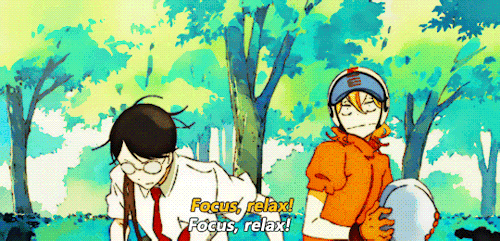
I really liked the style of Doukyuusei. Granted, this was another movie I chose to watch primarily because of the hype surrounding it. The dynamic between Kusakabe and Sajou is an interesting one, and I also enjoy how the movies different acts were separated by the seasons. However, there's nothing that really sets Doukyuusei apart from other romance movies, its a little generic. Still, I enjoyed it nonetheless.
3. Re:Zero kara Hajimeru Isekai Seikatsu 2nd Season - 8/10
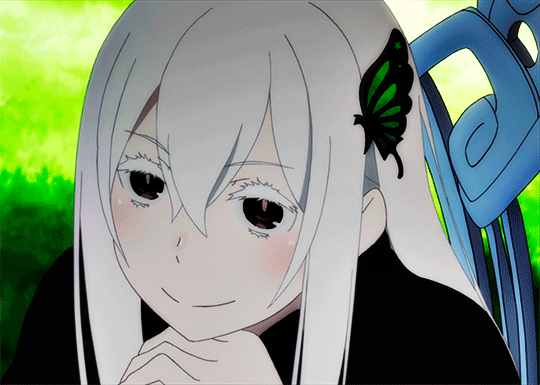
My opinions on Re:Zero’s second season are biased. This was, by far, the sequel I was most hyped for during the summer/fall anime season. I was so happy to see the story’s continuation and I’m looking forward to the season’s second part coming sometime in January. Re:Zero is one of my all time favorite series because of the way it handles it characters and power dynamics. I also really enjoy the show’s psychological aspects. If you haven’t already, give Re:Zero a try!
4. Saint☆Oniisan (Movie + OVA) - 8/10

This was a wonderful comedy. I wasn’t sure how the subject of Jesus and Buddha living together would be tackled, but it was handled wonderfully. I was laughing for pretty much the entire movie. I love the art style and little references to both Buddhism and Christianity, plus the incorporation of Japanese culture. Saint Oniisan is a bright comedy, with two eccentric main characters. If you like a show that doesn’t take itself too seriously, and need a good laugh, I can’t recommend this more.
5. Clannad: After Story - 10/10

Never, while watching anime, did I cry as much as I did while watching Clannad: After Story. I didn’t realize how much I related to Okazaki until I saw him grow up in After Story. I was left sobbing, especially after episode 18. I still, to this day, cannot listen to the Dango song without tearing up. The original Clannad is nothing special, but the continuation of its story its something heartfelt, emotional, and down-to-earth. I love Kyoto Animation with all my heart, and Clannad made me appreciate everything the studio has done just a little bit more. Thank you Clannad, for reminding me about the kind of person I strive to be.
6. Nakitai Watashi wa Neko wo Kaburu - 5.5/10

The art in A Whisker Away was beautiful. The story itself, however, is nothing too enjoyable. I found it difficult to like our protagonist or her love interest. Nothing about this movie is inherently memorable. The emotional climax came far too early which made the second half of the film seem long and drawn out. All in all, the movie has a wonderful concept, I just believe it could have been so much more emotional than it was. When I watch a move, I like to empathize with the characters. It’s difficult to do when the characters aren’t given the proper exposition to be empathized with.
7. Shikioriori - 6/10

This is less of a movie and more of a collection of short stories. Flavors of Youth is something you shouldn’t watch on an empty stomach, all of the food looks incredible. The same cannot beside for the rest of this feature. The stories themselves seems heavily clichéd. Much like A Whisker Away, the initial premise is intriguing, but the execution results in something that comes across as trying too hard and carries no emotional weight with the viewer. If you plan on watching, pay more attention to the artwork and animation than the actual plot. You won’t be missing anything.
8. Vinland Saga - 7/10

Vinland Saga helped me get out of the rut that Clannad: After Story. Not only does this show have a great story, its action packed with lots of interesting fights. I especially enjoyed all the Nordic history embedded within the show. Its really unlike any of the other historical anime I’ve watched. I will say, it’s gory. But, compared to all the other things I watched this time around, I finished this series the quickest. Its good, its graphic, its fast paced!
9. Mononoke Hime - 7/10
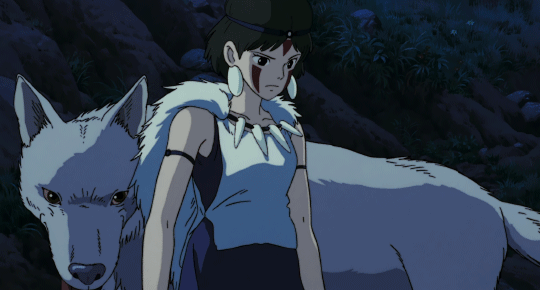
It’s ironic considering how much anime I’ve watched that I have yet to watch all of the most classic Studio Ghibli films. Princess Mononoke is grittier than most other Ghibli films I’ve seen, but it’s message is positive and its characters are wonderful. I can’t really speak ill towards classics like these. I guess maybe my one complaint is that this movie could’ve been a faster pace. Other than that... I really enjoyed everything Princess Mononoke offered! I understand why it’s so popular. ��
10. Howl no Ugoku Shiro - 8.5/10

Can you believe it took me this long to finally watch Howl’s Moving Castle? Me neither!! This movie is so endearingly beautiful. I loved every second of it, from the characters to the soundtrack. So many iconic things come from just this one movie. I would like to take this time to thank my best friend for reminding me that Studio Ghibli films are wonderful! Thank you for watching this with me, I loved it! All in all, I regret not watching this sooner!
11. Toradora! - 6.5/10

Toradora took me a while to finish, just because I lost interest about halfway through. But, I powered through it, and ended up really enjoying the show! I’m not the biggest fan of the ending, but that’s just a personal preference. Somehow, this show also made me cry? I’m not entirely sure why because Toradora! is probably the thing farthest from sad. Apart from the show’s dull slice of life moments, it was super cute! A much needed light-hearted romance.
12. New Initial D Movie: Legend 1 - 5/10

Full disclosure, this is the only thing related to Initial D that I’ve ever watched. My band and I watched this expecting to hear some of that iconic Initial D music, itself all we got was a mildly confusing story about different types of cars. It was cliché and frankly a little boring. Although, I am still considering watching the original Initial D just so I can hear the music in the way it was original intended. I’ve got no other opinions on this movie. It’s best not to watch these movies without the context from the rest of the franchise.
13. Uchuu Patrol Luluco - 7.5/10

I didn’t really understand why people enjoy studio Trigger so much until I watched Space Patrol Luluco. I loved all the fun references to other studio Trigger works. I loved the humor, and I loved all the bright colors. The animation was extremely high energy, and the art style fits the show’s premise. Each episode was only 12 minutes long so it was a super quick binge. If you’re looking for something quick, light-hearted and comical, this is the perfect show to watch.
14. Orange - 7/10
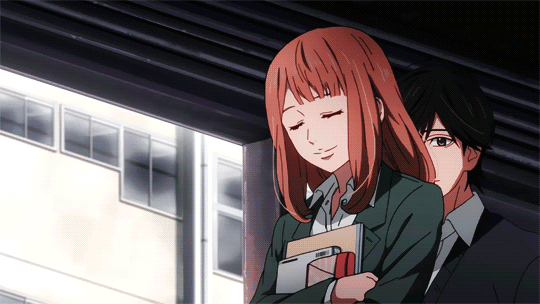
I owe a big thanks to a tumblr mutual for recommending this show to me! This holds the honor of making me cry by episode 3! I honestly did not expect the subject matter of this show to be as dark as it was. Usually when I see the genre ‘shoujo’ I do not associate it with a love story like that of Orange. The heavy subject matter made it a little too close to home for me, but I still really enjoyed this series. It reminds me off all the good times I had with my friends in high school, and of all the regrets I carry with myself to this day.
15. 3-gatsu no Lion - 7.5/10

March Comes in Like a Lion is another show that was a bit of a slow burn for me. Each episode left me feeling emotionally drained, so I had to take a lot of breaks while I was working on watching this series. Shaft, the studio behind this anime, holds a special place in my heart because I loved their work on the Monogatari Series. March Comes in Like a Lion is a little different. It’s driving force it is characters, and it was cathartic to watch our main character transform through the entire duration of the first season. I know the show’s second season is much better, so I’ll be starting that soon!
16. Yojouhan Shinwa Taikei - 8/10
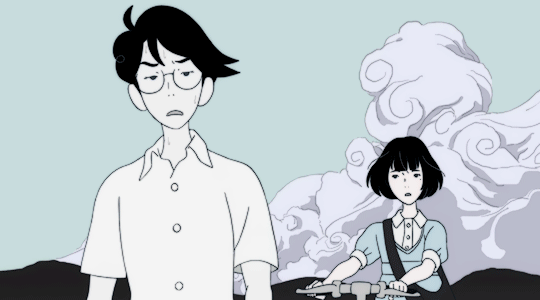
I loved how artsy and smart The Tatami Galaxy is, but honestly I couldn’t watch too much at once cause it would hurt my head. I also couldn’t watch this show while I was tired because the speaking rate is much faster than typical anime. The Tatami Galaxy is so unique for its medium. I loved the different time loops and the crazy animation. The characters were fascinating. The dialogue, although very fast, it also fantastic. There’s an element of humor to this unique story telling, and I enjoyed ever minute of it!
Currently Watching:
Hunter x Hunter - 6.5/10 (As of Episode 30)

I pride myself in having watched a lot of shounen anime, but I was reluctant to start Hunter x Hunter for years because I thought I would find it boring. I was oh so very wrong. Considering great shows like Naruto and Fairy Tail that fall under the same category, I expected Hunter x Hunter to be subpar in comparison. It gets a low score for two reasons. One, the power system was introduced a little too late and now I’m wondering if all the fights post episode 30 will involved nen in some way, shape, or form. Two, its still on hiatus.
Two Cursed Additions For This List
Please to do not let these be representative of my anime taste.
1. Yarichin☆B*tch-bu - 4/10
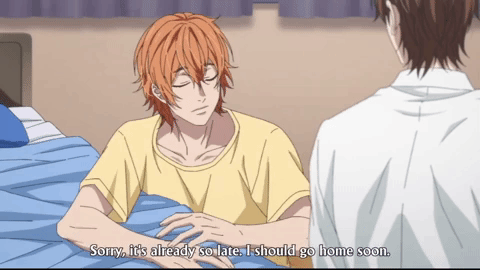
I am a CLOWN for not knowing this was 18+. The only reason I watched this was to see why everyone was talking about the pink-haired boy with the glasses and tongue piecing. I know why now, and I regret it. This was a massive mistake on my part. But hey, at the least the art and ending song kinda slap?
2. Euphoria (Dropped After 1 Episode) - 2/10

If you know what I’m talking about when I say Euphoria, I am so sorry. And no, I am not talking about the HBO series. Seriously, don’t google this. Don’t watch this. Don’t interact with anything related to this. You’re probably wondering, “Then why did you watch it?” I did not watch this willingly. You see, I have a very bad habit of starting anime and then taking months to finish them. I made an ultimatum with a friend, lost, and then was forced to watch this a punishment. Not a fun experience. I’m very glad there are no GIFs of this on tumblr...
#the god of high school#goh#god of high school#anime recommendation#doukyuusei#classmates#rezero#re:zero#rezero season 2#saint oniisan#saint young men#Clannad Afterstory#clannad#nakitai watashi wa neko wo kaburu#a whisker away#shikioriori#flavors of youth#vinland saga#mononoke hime#princess mononoke#Studio Mappa#studio ghibli#howl no ugoku shiro#howls moving castle#toradora#initial d#uchuu patrol luluco#space patrol luluco#orange#orange anime
276 notes
·
View notes
Text
So. If Cobra Kai were DC.
First off, the man who is the source of most problems, John Kreese:
Kreese’s mentor was an agent of the League of Shadows/Assassins planted within the military. Kreese was invited to take his place after his death. He trained with Ra’s al Ghul after the war and then left to found Cobra Kai as a covert recruitment operation for the League (not every Cobra alum became an assassin, only the ones Kreese saw that potential in). Johnny was on the path to recruitment and it was the loss against Daniel and resulting fallout that changed that. Kreese has been on League business every time he’s been ‘dead’.
Mr. Miyagi:
Mr. Miyagi was a Green Lantern. The ring chose him a while after he received his medal of honor and he was protecting the universe secretly during the Karate Kid movies. When Daniel overcomes his fear in TKK 3, Miyagi retires and the ring chooses Daniel.
Daniel LaRusso:
Daniel was a Green Lantern for years (a secret from everyone except Amanda and Miyagi), but the lantern’s power never replaced karate for him because karate is part of the balance that allows him to use the ring in the first place. The ring started to reject him during the period where his resentment of Johnny was overpowering his will (season 1-ish). It chose him again when he got a handle on that, but by then he had already turned his attention to teaching and empowering young people. He gave it up and it chose his daughter after she overcame her own fear at the end of season 3.
Samantha LaRusso
Samantha LaRusso was chosen by a Green Lantern ring after overcoming her fear and facing Tory at the end of season 3. She enters season 4 as a newly minted super hero.
Tory Nichols
Tory witnesses Sam as a Green Lantern early on. She has a lot of anger inside of her and seeing her rival - the girl who in her opinion was handed everything in life - chosen by cosmic power pushes her over the edge. Kreese encourages and feeds this anger, of course, though he does it with the intention of making Tory a better assassin. When a Red Lantern power ring chooses her that’s honestly a bonus.
Johnny Lawrence
Johnny was nearly recruited to the League of Assassins as a teenager - he would have been shipped off to official league training after highschool if he hadn’t lost to Daniel (and, likely, if Kreese hadn’t impulsively burned that bridge before remembering the larger plan). Instead, he was approached by the representative of an anonymous east coast billionaire after high school and paid to use his connection to the ‘late’ John Kreese - and pre-assassin training - to infiltrate and sabotage some activities the League of Shadows had going in the Valley. He never learned the full extent of what the League was or his or Kreese’s connections to it during this time (like, he probably could have if he’d tried, but he’s Johnny). He was inconsistent at best in his vigilantism after that, putting on a mask and patrolling more when he needed an outlet than based on the needs of the community. He was briefly the ‘Batman of the Valley’ when Batman first franchised out into Batman Inc. He’d given that up for years by the time he met Miguel, but dusts off his cape when he learns of new League operations in the Valley in season 4 (likely being run by Terry Silver).
His ‘cape’ is actually a red leather bodysuit. He definitely calls himself something like DeathFist or DeathFang or whatever in the long tradition of people in red bodysuits being called stuff like that (DeadShot, DeathStroke, etc.).
Miguel Diaz
Miguel will hit the streets patrolling with his mentor, but the transition to vigilantism also hits him at a time when he’s realized he probably shouldn’t have Johnny on such a pedestal so he’ll also use the opportunity to strike out alone or with friends. The transition also comes at a time when Miguel has noticed certain changes about himself he can’t explain - like how he destroyed Demetri’s tv with lasers that shot out of his eyes when he got a bit too competitive about Mario Cart.
Yeah, the bad man Carmen moved them to escape was not connected to organized crime. He wasn’t Terry Silver. He was General freaking Zod. Why does General Zod live in Ecuador? He’s building up forces there. Anyways, Miguel is half Kryptonian and just awakening to his powers since his body has been healing from the school fight. The injury was a kind of catalyst and as he heals he’s also becoming invulnerable. So much for his rivalry with Robby, right? Nope, that’s still on.
Robby Keene
Kreese thinks a mistake he made with Johnny was not bringing him into the fold sooner and getting him excited about the prospect of the League of Shadows. He knows very well that Robby will march out of Cobra Kai forever if he mentions anything about assassins before he’s ‘ready’, but he does start letting him know about the secret society of warriors and introduce him to some alumni who are with the league now. Maybe show off some missions where they actually intervened for good. Essentially, he makes him feel like he could be part of something - something that feels like family - which is bigger than himself (which is already an established part of his schtick).
As part of this pre-assassin buttering up, Kreese procures something special for Robby - gloves laced with kryptonite. He told him it would only level the playing field between him and Miguel, but it is enough to weaken Miguel enough to be killed. The plan is for Robby to go in thinking ‘Miguel is pretty much indestructible even with these gloves’ so he goes all out and kills him and then while he’s dealing with the trauma of having killed him Kreese can pull him fully into the League. While the plan won’t work, the path to it will see Robby getting a lot more weapons/assassin-specific training than Johnny did.
He will eventually take over Johnny’s suit and code name.
Eli ‘Hawk’ Moskowitz
Kreese’s plan for Robby is a more elaborate and thought out version of his original plan for Hawk. Hawk was never really a top priority for Kreese, but he spiraled so nicely that it seemed he could be plucked off into assassin-dom early. He saw Tory and Robby as better prospects than Hawk for long term use in the valley in part because he expected to have Hawk shipped off to train under Lady Shiva by now. He just had to rip the murder bandaid, and the plan was to push him until he killed Demetri.
Because Hawk was on the fast track, and because he was so good at convincing himself he didn’t care what he’d done to Demetri’s arm, Kreese actually already let him in on the true nature of Cobra Kai. He didn’t know for long before leaving and its not like he had any strategically vital info, but he knows enough to make him a loose end. Kreese sends the Cobras (minus Robby, but possibly including a Tory who isn’t quite used to her new power yet) after him. Hawk is murdered. And isn’t that a waste?
Kreese set it up, but when the likes of Tory and Robby almost leave over it he pins it on Kyler ‘going overboard’ and says it’s fine, they can save him. Hawk gets thrown in a Lazarus Pit and rises confused and angry. Under the grips of Pit Madness he temporarily forgets a lot (like leaving Cobra Kai and reconciling with Demetri and Miguel, but also things like his parents. Kid is a very angry blank slate.) and since most people think he’s dead its pretty easy to send him to the League. He’ll turn up again a few months later, when the League sends a squad to secure their interests in the valley. He breaks off when he can’t quite kill Demetri in a fight, but he doesn’t remember why and roams around the valley causing trouble or helping out as he sees fit until Demetri can get through to him (Demetri’s eternal struggle).
He doesn’t call himself Red Hood, but you get the gist. Hawk is already a code name.
Demetri [Insert Surname]
Got Eli back only to lose him for good. He thought. Until Not-Red Hood shows up and causes problems. But the slippery assassin keeps getting away before he can really talk to him! Miguel is steadily developing Super Powers and wants to help, but things are also heating up over in the Main Conflict and Demetri is left chasing Hawk alone a lot of the time.
Maybe it’s that determination that causes his latent metagene to activate.
Demetri only ever thought super speed was the second best superpower, but he rethinks that after he has it. In hindsight, his smart ass does fit the speedster profile and Eli definitely can’t get away now!
His lightning when he runs is blue.
And yep, that’s all for now. I’ll never write a fic for this ‘verse it’s just fun to think about. More so about how after the San Fernando branch of the League of Shadows is destroyed the kids can all make up and form a cool super team. Also, if I were to write fic, it would be Demeli. As I'm sure anyone I've interacted with in this fandom knows.
#cobra kai#hawk cobra kai#demetri cobra kai#eli hawk moskowitz#daniel larusso#Johnny Lawrence#john kreese#sam larusso#tory nichols#robby keene#mr miyagi#the karate kid#binary boyfriends#demeli#dc comics
36 notes
·
View notes
Text
The Witcher: The Games vs the Books part 2 – Characters and Accents
So, I've already talked at length about the relationship between the Witcher books and games, but how well they captured individual characters is its whole own subject – and you’d better believe I have enough thoughts on it for a whole extra post.

Andrej Sapkowski's skill for creating vivid and engaging characters really is so much of what brings the books to life, and no matter how much work an adaptation might put into worldbuilding and plot, it's the characters you've really got to nail to get the long-time fans on board. Especially when you’ve done what the games have, framing themselves as a direct continuation of Sapkowski's story. Nothing invites comparison to your source material like basically forcing fans to read the original novels to understand even half the backstory alluded to in-game.
So how did they do? I can only offer my opinion – characterisation is necessarily going to be a lot more subjective than just telling you what plot points the games contradicted outright – but like any fan, I have opinions in plenty.
Of the main cast, I feel Yennefer is the character they've captured the best. They've done just as well with some supporting players – I have no real complaints about Dijkstra or Phillipa, for example, who are favourites of mine in both games and books. For the main players though, Geralt and Regis seem to be the ones who's differences I'm most inclined to forgive, whereas I don't feel like they've done Ciri justice at all. Book!Geralt is much less of a smartarse, for one thing, whereas Book!Ciri is much more of one. But if we're talking about the differences, I’m afraid we really need to start with Dandelion.
Dandelion
For all the genuinely good work the games do with characters, old and new, I don't think I can overstate what a disservice the they've done Dandelion, who I could not stand in TW3, but is now one of my favourite book!verse characters. Alas, Dandelion is a prime example of something the Witcher games really don't do well: camp. Being the archtypical bard, Dandelion is about as flamboyant as any enthusiastically-heterosexual man can be: you should be able to spot this guy by body language alone, he should be flouncing around and he should talk like a spoiled noble auditioning for Shakespeare. Book!Dandelion is over-the-top and ridiculous and just so much fun, and I loved him well before I'd even really gotten into the rest of the books around him.
Here's just a bit of dialogue from one of his first appearances, to give you a sense of how he and Geralt play off each other.
The bard seized the fingerboard of his lute and plucked the strings vigorously. ‘How would you prefer it, in verse or in normal speech?’
‘Normal speech.’
‘As you please,’ Dandelion said, not putting his lute down. ‘Listen then, noble gentlemen, to what occurred a week ago near the free town of Barefield. ‘Twas thus, that at the crack of dawn, when the rising sun had barely tinged pink the shrouds of mist hanging pendent above the meadows—’
‘It was supposed to be normal speech,’ Geralt reminded him.
‘Isn’t it? Very well, very well. I understand. Concise, without metaphors. A dragon alighted on the pastures outside Barefield.’
Though TW3's Dandelion certainly looks the part, you have to go hunting through art from the Gwent cards to find much that comes close to really capturing his personality (see left pic below – though even there, a Dandelion who'd voluntarily break his treasured lute is a very hard sell). Though a lot of fanart does better (right-below – credit goes to Tatiana Ortaliz).
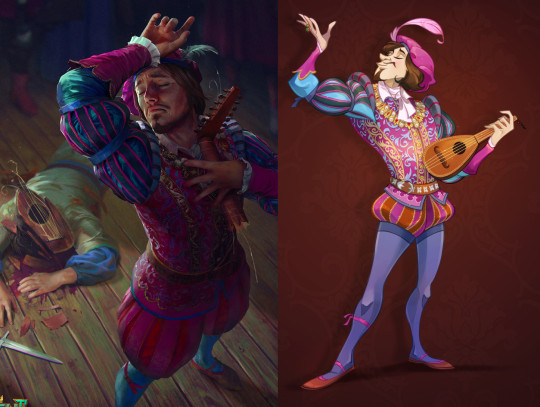
But as poorly as the games capture his flamboyance, they're not that much better when it comes to taking him seriously. TW3 left me thinking he was all talk and no substance; the books make abundantly clear that he really is renowned enough to be welcome in courts across the continent. Though he often overestimates what he can talk himself out of, he isn’t stupid either: he's lectured at Oxenfurt, spied for Dijkstra, and then there are the moments where the frivolous playboy mask slips and you realise he's sometimes much better at understanding people and relationships than Geralt will ever be (which is honestly kind of funny considering how many of Dandelion’s relationships end with plates being thrown at him from an upper story). He's not at all above mocking Geralt when he deserves it either (and especially his personal and relationship issues) – Geralt will happily mock him right back.
We never do learn how they became friends (I'm pretty sure the incident listed in the wiki is just the date of their first expedition together, not their first meeting), but Geralt just doesn't form lasting friendships or romances with anyone he can't have an intelligent conversation with. And Dandelion is a damn good friend to Geralt – one who, despite being a helpless, squishy little bard, will keep Geralt's secrets under torture, or will follow him into Nilfgaard in the middle of a war simply because you don't let a friend make a trip like that alone. (Seriously, I don’t ship it nearly as much as some, but hot damn there is some material in here if you do.) In short, it's basically inconceivable that he'd leave an amnesic Geralt wandering around Vizima alone, as he does in the first Witcher game – which is the kind of thing I can mostly forgive as a gameplay conceit, only it doesn’t really get better from there.
He’s also supposed to be blond, something I don’t think is technically specified until fairly late in the novels, but 100% what I’d been picturing since his first description as a man in a colourful bonnet with cornflower-blue eyes (let’s face it: Dandelion’s hair isn’t the only thing about him that screams ‘blond’). It’s a shame no-one from the games to the show to the novels’ cover artists seem to have noticed – but at least there are some fanartists out there who were paying attention (credit for these goes to Asphaloth, Ghostcupdraws, Hvit-ravn (tumblr deleted), 94355 and itsmespicaa).

As for the games? Well, I cannot speak to how Dandelion came across in the original Polish, but I think it speaks worlds about the priorities of the English version that they didn’t even bother to cast someone with a halfway-decent singing voice as their master bard. There are isolated moments of dialogue that come close to sounding like book!Dandelion– mostly in Witcher 2, which comes closer to capturing the spirit of the books than either 1 or 3, or his attempts to convince his captor he's a disguised noble when you rescue him TW3 – but his voice actor is just painfully ill-suited to the role.
Geralt
Geralt fares much better than Dandelion, though he’s still a little hard to square with the Geralt of the books. Book!Geralt spends a lot more time sulking, just to begin with: he sulks because his job is complicated and gets him no respect, and because the world is unjust and unfair – and, most of all, he sulks because Yennefer has dumped him again. He also gets mocked for sulking, and usually deserves it. Book!Geralt is generally a lot more taciturn and a less prone to making smart comments just to have something to say – arguably because in book!Geralt's world, making smart comments often ends at the gallows, or at least with some corrupt official making your life much harder. Book!Geralt's world kind of sucks, and he's just got to put up with it.
As much as he often plays into the expectations of being an uneducated monster hunter, he's also got a more of an intellectual streak than you’d guess. He may prefer to stay out of politics (because damnit, his job is to save people from monsters, not people who are monsters), but he attended school at Nenneke's temple and has even taken classes at Oxenfurt academy, and there's a lot of thoughtful nuance to his opinions – his speech to Ciri about why he can't in good conscience take a stronger stance against the Scoiata'el contains a wealth of historical perspective, just for one example. Even his smart comments tend to be, well, somewhat smarter in the books.
Book!Geralt’s explicitly a lot younger than Yennefer – around 50 is the usual estimate, falling far short of the 100-ish the games suggest (the scandal of having a man fall for – gasp! – an older woman clearly didn’t bother Sapkowski one bit). You don’t see nearly as much "I'm getting too old for this" from book!Geralt, who's really not that old by witcher standards, and is apparently still hunting monsters long into his future. I'm also a little annoyed by the way they play off his hatred of portals like he's a grumpy old man who doesn't like mobile phones, when his distrust originally came from having seen the gruesome deaths that result when portals go wrong. This is not to say Book!Geralt lacks other ordinary human flaws, however – twice in the last two books of the main saga, he gets severely sidetracked after his ego gets the better of him (in the adulation he receives after being knighted, then after arriving in Toussaint), and it's quite some time before he properly gets back on track for that whole rescuing-Ciri thing again. He’s also pretty hopeless when it comes to romance and relationships – breaking things off gracefully is really not in his skillset.
So why does game!Geralt not bother me more? Well, he's the main player character of a game franchise, and one who has to carry the experience largely solo. Some adjustments for genre are pretty much inevitable in that position. He's certainly fared better than Meve, for example, who's been softened far more from her book characterisation for her PC role in Thronebreaker. Then there's the whole amnesia thing – it's easy to believe that sort of experience would change a man – and if he doesn't sulk so much as he used to, maybe he's grown up a bit. Geralt's also in many ways the straight-man of Sapkowski's Witcher universe – there largely as the reliable centre for other, louder personalities to play off. But I expect the real bottom line here is that I do still like game!Geralt enough to forgive him a lot of what he lacks.
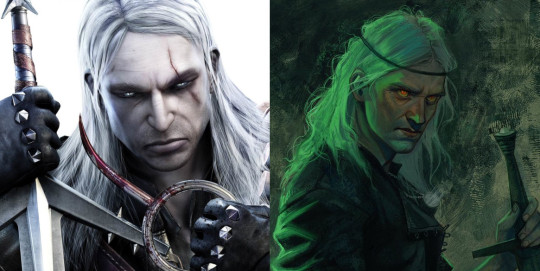
The books never do describe Geralt as being very attractive – something book-based fanart often tries to reflect. The point has been made before that the rather-alien-looking Geralt of the first game (left pic above) is probably a lot closer to his book-description. However, the main distinguishing factor you’ll see in book-based fanart is probably the ubiquitous headband, which genuinely is what book!Geralt wears to make his hair behave (the example on the right above comes from Diana Novich).
All that said, if Sapkowski really wants me to believe that nearly so many women are eager to jump into bed with him, I’m going to have to shallowly assume our witnesses are unreliable on this front, and Geralt is at least as attractive as Witcher 3′s take on him. Nothing else makes sense. *g*
Regis
Regis varies mostly in that book!Regis is a lot more smug, sometimes verging on obnoxious – and a lot keener to make fun of Geralt (who generally deserves it). But then, Regis is old and wise and superpowered enough to dance rings around most everyone else – can you blame him? By Blood and Wine, Regis' overconfidence has been recently smacked down hard after his near-death-experience at the hands of Vilgefortz, and that kind of thing could knock some chips off anyone's shoulder. Throw in the fact that with Dettlaff, we have a situation not even Regis could make light of, and the changes to game!Regis make a certain amount of sense.
I do feel it's a bit of a shame that the vocal direction didn't work just a little bit harder to capture some of Regis' smugger side, or emphasise that his long-winded philosophising on human behaviour is supposed to sound a bit pretentious. This is actually something I suspect they were going for a few times in the script, but which didn't come through in the dialogue quite the way it was meant to. Still, again, I'm sure I'm biased by the fact that I like game!Regis far too much to find much fault in what they've done with him. They've done a lovely job capturing his friendship with Geralt too.
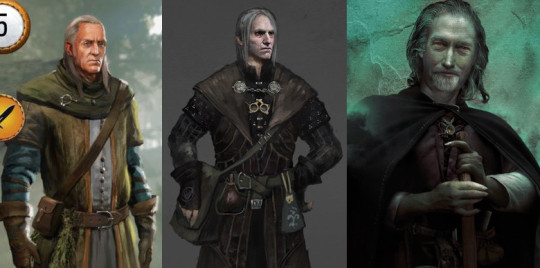
Looks-wise, there's a tendency in book-based art to portray Regis with long hair (even some pre-Blood-and-Wine Gwent art did so – see the two pics on the left above, from Gwent and early B&W concepts. The right-most pic is cover art from the books). I couldn't rightly tell you where long-haired-Regis comes from, though – perhaps it's described more explicitly in the original Polish, or perhaps it comes up in passing in some passage I've forgotten, though it may just as well just be a fannish meme.
The books do describe him as looking rather like a tax collector, slim, middle-aged, with an aquiline nose, prone to wearing black, and his hair as 'greying' or 'grey streaked', so presumably somewhat younger-looking than the game would have it. The hammer-horror-esque sideburns are likewise a game-verse addition, though I do like the look they went with – it's distinct from Geralt in a way that making him another long-grey-haired man wouldn't have been, and that's probably the point.
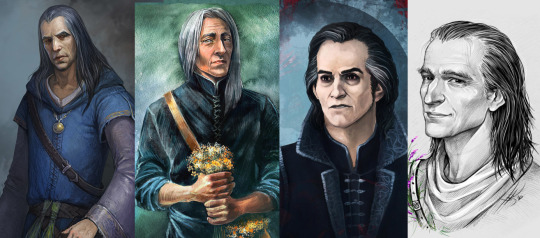
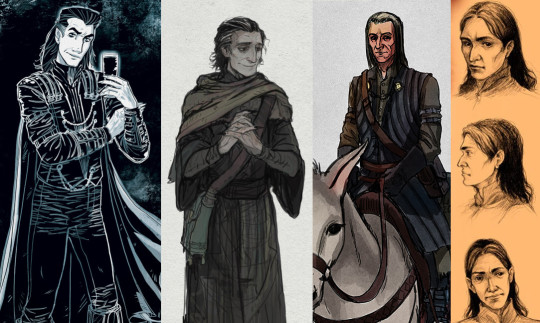
Being the hopeless Regis fan I am, I have quite the folder full of different fanart takes on book!Regis, so have a selection – art here is by gellihana-art, justanor, greysmartwolf, Nastyaskaya, NatalyLanier, beidak, natalliel, ellaine and afternoon63. For what it’s worth, I feel beidak’s (bottom pic, second from the left) comes the closest to what I’d have pictured personally, based on how he’s first described.
Ciri
I find it much harder to rationalise the changes to game!Ciri, who I didn't exactly dislike, but found stuck too close to the role of generic-macguffin-girl-who-just-wants-to-be-normal to be very interesting. Having read the books, not only do I much prefer book!Ciri, I'm not sure I can emphasize enough how much the game did NOT prepare me for utter gauntlet of whump and misery that girl survives in the last four titles. Book!Ciri is a character who works for me mostly because of the same flaws the game mostly strips her free of – TW3 makes some token noise about how you can't tell her what to do, but she’s an utter little royal brat when we first meet book!Ciri, and it’s so much of what brings her to life. She throws herself into her witcher training with the enthusiasm of a kid going completely native, but still revels in getting to be girly for a change when Triss first arrives at Kaer Morhen. She hates Yennefer at first, but soon bonds with her just as strongly as she ever did with Geralt, picking up some of Yennfer’s haughty mannerisms along the way. And then she gets thrown through a portal and lost in the distant wilderness, and the whole world comes down on her head.
The build up to the first time Ciri actually has to kill someone is intense... and things only get worse from there. Steadily. For another couple of novels at a stretch. Seriously, a major caveat that pretty much has to go into any rec for these books (and I will absolutely rec these books) is that Ciri's story gets heavy. So heavy one finds oneself using phrases like, "that time that one guy died of his wounds on top of her while semi-consensually feeling her up was honestly one of the less traumatic incidents in the period."
By the end of the novels, Ciri has nearly died of thirst, been beaten, tied up, dragged around the country as a prisoner, run with bandits and killed innocent people for the fun of it, done fantasy-cocaine and got a tattoo, fought off more than one attempted rape, been drugged, lain for multiple nights next to an impotent elf who completely fails to impregnate her, watched the bodies of her friends and girlfriend being mutilated in front of her, and did I mention where she got that scar? She has survived hell, and it is absolutely a testament to her own strength that she somehow comes through it and puts herself back together at the end. When Geralt finally arrives to rescue her, what matters most isn't that her ordeal is over, but that she finally knows she hasn’t been abandoned by everyone who’d ever loved her after all.
The Ciri of the books is fierce and wild and arrogant, but she's learned her morals from the best, and she holds onto them until she can't, then picks them back up again when she can, and above all she survives. For all that her story turns arguably too much of the last two books into a slog of misery, oh boy does it pay off at the end. And that's probably about as much as I can say about her Big Moment in the last book without spoiling too much, so suffice to say that by the end of the saga, Geralt has pretty much become a supporting character in Ciri's story, not the other way around. (Seriously, you’d be surprised how few chapters of the last two books he’s actually in.)

Finding art which captures the aspects of Ciri’s character and history which are missing from the game has turned out to be pretty hard, though the fanart above from her bandit phase takes a decent crack at it (credit to Loles Romero and NastyaSkaya). I do rather like that one shot of her on horseback beside her girlfriend too, which comes from Denis Gordeev’s illustrations for the novels (below).
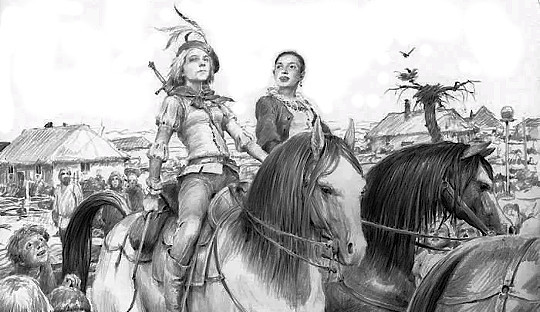
How much of this does TW3 get across with her portrayal in the game? Well, she's still pretty headstrong, I guess. And they let you give a 'sorry, I like girls' answer in one bit of dialogue, so they remembered her girlfriend existed. That's nice. But game!Ciri still has a kind of wide-eyed innocence that book!Ciri lost years ago, while book!Ciri is a little force of nature in ways the games hardly even hint at, and that's a really shameful loss.
You'd think, with a character so young, it ought to be easier to imagine she's simply grown up since we saw her last, but so much of what's changed about Ciri feels like a step back rather than forwards. I can shrug off Geralt and Regis' differences and still enjoy their game-verse-selves, but Ciri leaves me genuinely disappointed.
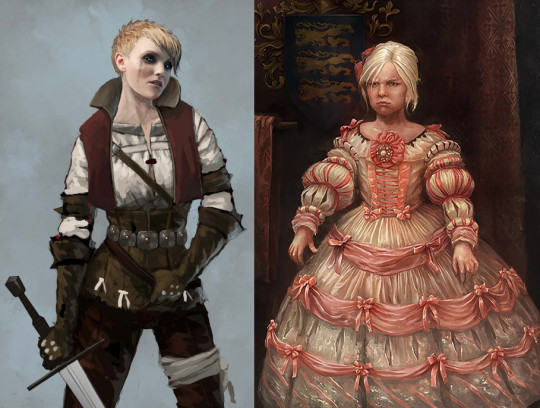
I’d say the official art that comes closest to capturing book!Ciri is that one portrait of her as a very grumpy young child (right above). Some of the early concept art (left above) feels a little more like it has her attitude, though she’s rather too yellow-blonde – not to mention too pretty. I think it also bears pointing out that Ciri isn’t really supposed to be the kind of beauty she is in the game – even before she gets what’s meant to be a seriously ugly and disfiguring scar. (Fanart below by justanor and bobolip)

But of course, the male gamer fanbase can’t be expected to give a fuck about a girl they wouldn’t want to fuck, so game!Ciri must be generically gorgeous. Le sigh.
Triss
I suppose I should at least touch on Triss, too, though she's a very odd case. She's so out of character in the first Witcher game that I am wryly amused that the biggest thing they arguably do get right is that taking advantage of Geralt the moment he showed up with amnesia is... pretty well in-character for her (look, I gotta be honest here, I'm not much of a fan of Triss in any of her incarnations).
The second game does a much better job with her – she actually feels like book!Triss, she has some good dialogue, we're finally dealing with some of her conflicted loyalties to the Lodge and to Geralt – though by the third, her characterisation has been so softened into “the nice one” that none of that potentially meaty conflict is ever resolved, or even really mentioned. Perhaps there's more buried in the Triss-romance path, which I've never bothered with, but the writers seem to have just given up on dealing with anything that might make her look less than wholly sympathetic. Heck, we hardly even get a clear statement about why she and Geralt broke up between Witchers 2 and 3.
Even speaking as such a not-a-fan of Triss, I promise there is more they could've done with the character the books give us. There's her ongoing trauma in from the Battle of Sodden, where she was injured so badly she was memorialised as one the dead: the 14th of the hill. There's her furious impatience with the neutrality of both the witchers and the Lodge: Triss has fought and died for a cause, and is ready to do so again. The second game sort of gets into this, but by and large, the games really aren't up to tackling the moral complexity of having such a theoretically-sympathetic character as Triss, who was still broadly willing to go along with the Lodge's plans to pair Ciri off and get her pregnant as soon as possible – her own wishes be damned. No, instead, Triss has conveniently left the Lodge before the rest of them go spiraling into abject villainy in the second game, clearing all that messy grey stuff out of the conflict.
Of course, the really big unresolved plot point still hanging over book!Triss is how badly she needs to terms with the fact Geralt's just Not That Into Her, and never has been – but since the games want Triss to be a serious romantic option, that's definitely not getting the resolution it could've used.
Book!Triss also pointedly avoids any outfit with a plunging neckline because her chest is covered with the ugly scars she received in the Battle of Sodden, something the games did not have the guts to reproduce. In a more confusing note, the books do consistently describe her hair as 'chestnut', which we'd usually think of as meaning 'brown' – though it turns out the games actually may not have been wrong to make her a redhead, since in Poland 'chestnut hair' apparently mean dark red hair (google some pictures of actual chestnuts, and you'll see why). Still, the firy-red-haired Triss of TW3 who wears nothing but plunging necklines remains a bit of a stretch, however you slice it. Once again, TW2 gets her best (and I must say, gave her the nicest outfit) – though even here she's conspicuously unscarred in all her sex scenes.
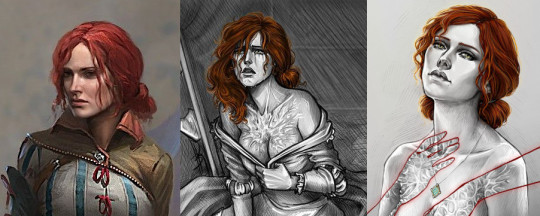
(Leftmost pic above is official Witcher 2 art, whereas Triss-with-scars fanart comes to us – once again – from nastyaskaya)
Shani
Shani sort of falls into a similar category as Triss as someone who isn't terribly well-served by any of her appearances, given that both exist in the first game largely to compete for Geralt's attentions. But I can't honestly say I find Shani’s portrayal in the Hearts of Stone expansion to be much better – the degree to which either version exists solely to fall all over Geralt is a bit painful, especially given that their relationship in the books is limited to a single, undramatic hook-up. Book!Shani really only appears in a couple of chapters: we meet her as a medical student friend of Dandelion's, who's been surreptitiously selling pilfered university supplies to fund her degree, then later see her again in the final book, where she proves herself as a battlefield medic during the climactic Battle of Brenna. She's pragmatic to a fault, and I really can't see her as the type who needs Geralt to point out to her that her patient is dead, for example, or who'd subject a guy with Geralt's problems to such an extended feelings-dump as you'll get out of her during the wedding.
Shani is a reasonably logical book-character to bring back, if only because she’s one of those who explicitly survives the ending, but for my money, "serious contender for Geralt's affections" is just not a role she works in.
Anna Henrietta
The duchess of Toussaint, Anna Henrietta, is another case who differs more from her book counterpart than you might think. In the books, the duchess is by far the least competent of the (pleasantly many and) various female leaders and rulers we meet – she comes across as rather young and naive, and every bit as absurd as everyone else in the ridiculous fairy-tale duchy she rules. She is, for example, most displeased to learn that Nilfgaard's war against the north is ongoing (something her courtiers have carefully avoided mentioning in her presence), because she'd long since sent the Emperor a stern note demanding he brought it to an end. She promptly has one of her ministers sent to the tower for misinforming her, and demands the others prepare an even sterner note for the emperor, which will surely do the job.
After Dandelion (inevitably) cheats on her, she has him repeatedly sent to the gallows, only to change her mind and send him a reprieve at the very last minute each time. Picture yourself a much younger and prettier version of the Queen of Hearts from Alice in Wonderland, and you've about got her general vibe.
Blood and Wine sort of waves at this part of her character when she first speaks about Dandelion, and again in suggesting there's a widespread feeling she lacks compassion, and once more as she proves utterly immovable on the subject of her sister. But the generally sensible and insightful woman you deal with for most of the main story is a far cry from her book-verse characterisation. That’s a bit of a shame, because I feel like there's a lot more they could have done to blend the two versions of her. Still, it’s hard to argue the duchess we get suits the story being told around her.
Other characters
Much as I love Yennefer, Dijkstra and Phillipa, I don't really have much more to say about them because I feel the games have done such a good job. The Yennefer of the books gets to show a lot more depth and complexity simply because she has more scenes and more space in which to do so, but when ‘there isn’t more of her’ is your biggest complaint, the game is officially doing pretty well. I could certainly gripe her about how “dresses in black and white” seems to have been taken as “dresses in black with maybe a trace of white trim”, or how Yennefer and Triss seem to be the only sorceresses in the world capable of wearing pants, when Phillipa (just for one) is in sensible men’s clothing the very first time we meet her, but that’s getting into serious nitpicking territory.

(Not that Yen can’t look amazing in outfits with more white – art by Emily Caroll, theclashofqueens, BarbaraRosiak, and cosplay by greatqueenlina)
Vesimir, Lambert and Eskel, Geralt's fellow witchers from the School of the Wolf, fall into a similar category for me – though we spend far less time with them in the books, everything we see of them in the games feels like a fairly logical extension of their book-roles. Vesimir is somewhat over-played as the old fogey, and his death is painfully cliched, but the impact on the characters and Kaer Morhen still hits home – and the games do some especially great work expanding Lambert into a much more complex character. To my mind, the only shame is that more of the book-original characters didn't get the same treatment.
Who have I missed? There's Avallac'h, of course, but I think I've got him pretty well covered by that last post. Zoltan, perhaps inevitably, has had his personality largely flattened into 'generic dwarf', with nothing better to do than hang around Geralt and Dandelion. You wouldn't know Book!Zoltan was apparently incapable of turning away women and children in need, for example – even human women and children with the chronic inability to say thankyou for his help. Or that he eventually admits to Geralt that the luggage he and his friends are carrying comes from a decidedly unsavoury source for such a supposedly charitable, upstanding guy. Yes, even Zoltan gets to be a morally complicated character in the books – who knew?
Speaking of dwarves, pleased as I am that Yarpen Zigren gets remembered in TW2, he's an odd one to talk about, since even in the books, he appears to have had a substantial personality transplant between his two main appearances. Yarpen’s a largely comedic figure in The Bounds of Reason short story, where he cheerfully admits to having considered letting his men knock down a particularly pompous aristocrat and piss all over him to teach him a lesson, but he’s evolved into a studious voice of reason against the scoiata'el by Blood of Elves. TW2 doesn't do a particularly good job of capturing either version, which I suspect probably bothered me more than most people – I liked the later book-incarnation of Yarpen immensely (and not even just because he's one of few ever to really call Triss out on just how much she needs to stop misreading Geralt's friendship as anything more than it is). His chapter in Blood of Elves packs a hell of a punch.
On the subject of accents
I do have to wonder if I'd have warmed up to characters like Triss, Shani and Dandelion (or even Letho) more if they'd only had halfway decent voice actors. It's not just that none are exactly leading the talent at the acting part of the job, it's that their American accents stick out in TW3 like a sore thumb.
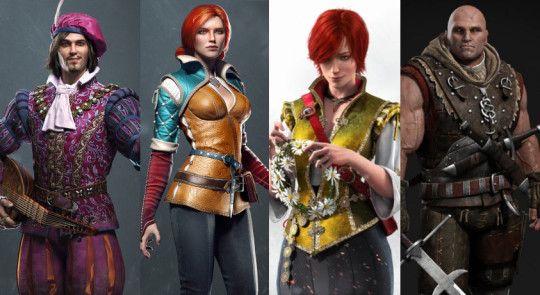
Geralt mostly gets away his own US accent by dint of being the very first character we meet, so we've gotten used to the way he talks long before we notice how he stands out – hell, maybe that's just how they talk down in Rivia (hilariously, book!Geralt eventually reveals he's not even from Rivia, but simply picked the place and taught himself the accent so he could feel a bit less like the abandoned foundling he is, which only gives us yet more excuse for why his accent might sound a bit weird). More importantly, Geralt is meant to stand out, to be the outsider wherever he goes, so having him sound like no-one else fits the character.
But neither Triss or Dandelion are "of Rivia", and by the time they show up we've had dozens of hours in a game where literally everyone else sounds British, or Scottish, or Irish, or vaguely-eastern-European in the case of the Nilfgaardians. So why do these weirdos sound like no-one else on the continent?
The short answer seems to be that every character with an American accent in TW3 is someone who had an American accent in at least one of the previous games, which were way looser with their casting and had enough incidental American accents around that they didn't stand out. Clearly, by TW3, consistency with prior games has been prioritised over consistency with literally anything else we’re hearing.
Gaetan is an exception to the rule as the only new character (at least that I caught) with an American accent – presumably because between Geralt, Eskel, Lambert, Berengar, and Letho (and cohorts), some sort of 'witchers have American accents' rule has been pretty well established (another random American-accented witcher shows up in Thronebreaker, just to underline the point). We're going to mostly ignore Jad Karadin here, since his British accent is presumably a recent affectation to go with his new identity, and so makes sense.
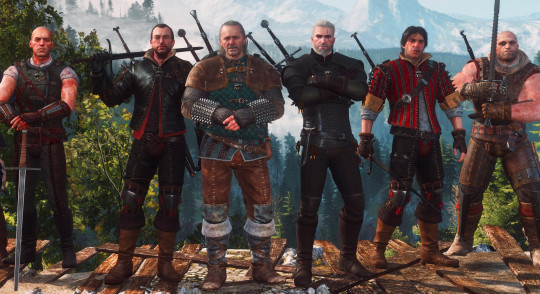
This still doesn't really work though, since Letho’s school is all the way down in Nilfgaard (land of the Eastern European accents), while the oldest witcher from Kaer Morhen (Vesimir) is the one guy with a British accent. He sounds nothing like any of his students, despite the fact he's logically the guy they ought to have learned their accents from. So the logic falls in a heap however you slice it, and I'm thrown right out of the game.
With TW3 as your intro to the series, it feels almost as if characters like Triss and Dandelion have been assigned American accents because they're just too important to be saddled with the same pedestrian British accents as everyone else, which did nothing to endear them to me. The only one I eventually warmed up to was Lambert, and then only because he's just such a bitter asshole that he eventually goes full circle and comes out the other side (somewhere around when you've heard his miserable backstory, then gotten drunk together and told him how much you love him, man). Gaetan similarly snuck in under the same clause – American accents clearly work better for me in this series when attached to characters you're supposed to find pretty insufferable on first impressions.
Some final notes
To conclude, it seems only fair to throw in a quick nod to some of the more memorable book-characters who don't appear in the games. Neither Mother Nenneke (Geralt's sort-of-surrogate mother) or Vissena (Geralt's biological mother) ever appear either, alas – Vissena doesn't even merit so much as a Gwent card, which seems quite the wasted opportunity.
Milva, Cahir and Angouleme – the three remaining companions of Geralt’s who died alongside Regis but who were not so easily resurrected – naturally don’t appear. But nor are even really mentioned in all the games, which seems rather less than they deserve after giving their lives to Geralt's cause.
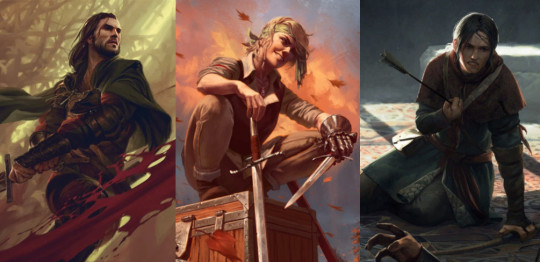
Cahir and Angouleme do at least have pretty badass Gwent cards to their names, though I am properly offended that Milva (who has the dubious honour of being my very favourite book character who doesn't ever appear in the games) is stuck with a card of her freaking death scene – which not only gets the scene wrong (believe me, there was no grimacing and gripping the arrow buried shallowly in her chest for poor Milva), but doesn't even bother to get her hair the right colour, for fuck’s sake. Basically, Milva was a stone cold badass and absolutely deserves better. #justice4milva
One can only guess how I'd have felt about some of these characters had I read the books before playing the games – I am obviously biased towards forgiving changes to characters whom I liked in their game incarnations, regardless of how they compare. Still, I think it does speak wonders that there still all these characters who suddenly made sense only after I'd met them in the books.
Even if only for Dandelion and Ciri, I can only dream of seeing a bit more of the book-original characterisations make it into the collective fannish consciousness. There's nothing wrong with getting into the canon purely based on the show or the games, but having read Sapkowski's novels, it's no longer any mystery how they spawned this massive franchise. That the saga wasn’t even fully available in English until well after Witcher 3 was released – a solid couple of decades late, and long after it had already been translated into Russian, French, German, Spanish and more – is a real shame. For once, it’s us in the anglophone world who’ve been missing out: these books deserve so much more than to be thought of as a footnote to the games or the show.
#Dandelion#Witcher novels#Jaskier#Ciri#Regis#Geralt of Rivia#meta#The Witcher#long post is even longer this time#I blame everyone who gave me such lovely feedback on that last post *g*
72 notes
·
View notes
Text
Sephiroth’s true eye color (among other things)
Ever since I got into FF7 stuff I’ve wondered about Sephiroth’s rather inconsistent eye color over the media he’s appeared in (which is a lot), and I think I finally have an answer for it, as well as answers for other slightly unexplained phenomena. Warning you now, this will be fairly long and full of spoilers for multiple games in the series, yet hopefully informative.
Sephiroth is best known for his green, cat-pupiled eyes, among other things, and that’s generally the accepted eye color for him in fan works and such. But his eyes are actually light blue, and not just mainly in spinoffs. There will be a TL;DR in about the middle of the post for one interesting point, and another at the end for the whole post in general.
Disclaimer: This isn't intended to be a "this is the right way to portray Sephiroth's eye color" gatekeeping thing, this is just an analysis of an element of character design that went way too deep and is breaking Tumblr as we speak hfsdgyfudgfsd
Evidence, theories and such under cut-- all 63 images (yes, you heard me, be warned) either come from various wikis as official art/screenshots/etc. or are my own screenshots:
In Final Fantasy 7, where this mess all started, his iconic official art has green eyes:

But in all other art, models, etc. for the game, even the Ultimania scan, his eyes are light blue (or some sort of blue in general):


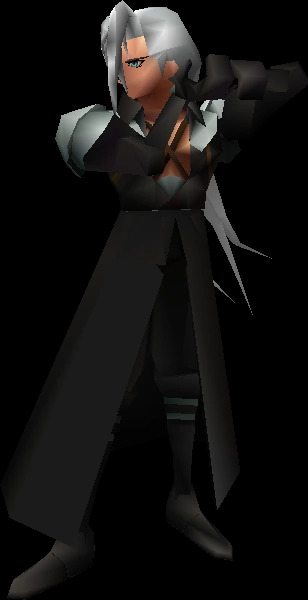
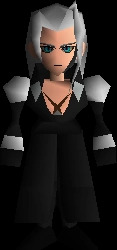
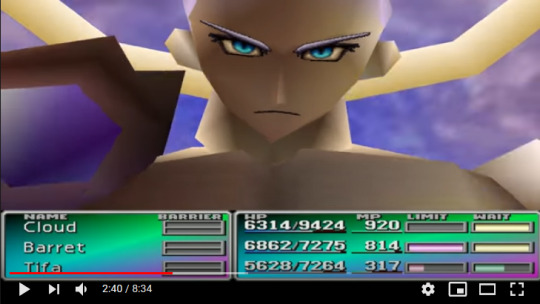
Of course, you could argue that Sephiroth’s official art also has blue eyes if you stare at it hard enough, but at first glance it’s more green than blue, and with the amount of green-eyed art I’ve seen, I’m sure many people have just accepted that his eyes are green and nothing more.
Several other games in the main series also portray Sephiroth’s eyes as light blue, sometimes borderline colorless depending on the lighting:

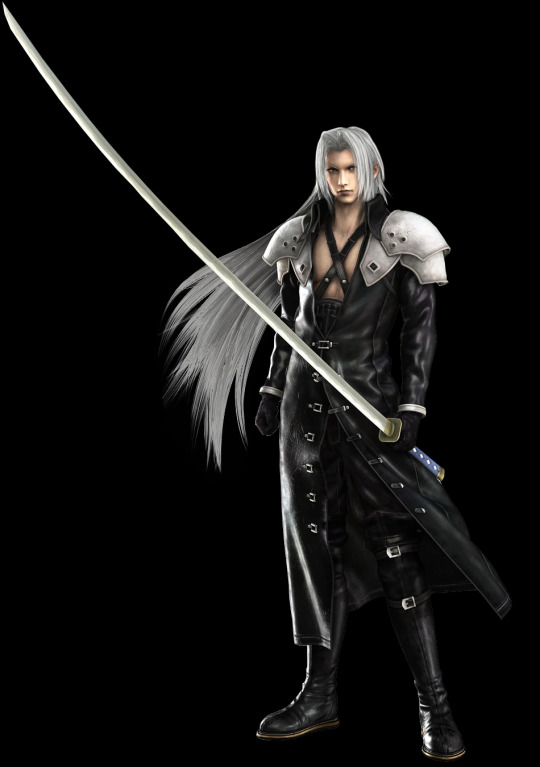



I particularly curse Advent Children for it’s washed-out aesthetic because in the darker scenes it completely masks Sephiroth’s real eye color. Thank the gods for HD screenshots.
However, there is a very interesting phenomenon that only seems to happen in Last Order, the 25-minute animated retelling of the Nibelheim Incident and Zack and Cloud’s escape 5 years after. No one seems to have noticed this yet, to my knowledge, so I’ll go through this as clearly as I can.
When Zack confronts Sephiroth in the reactor, the latter’s eyes are light blue:

It isn’t very obvious due to the mako glow tint and his face being in shadow, but I’d think green eyes would look different here, so they are light blue. They stay light blue for a while after this, until Zack begins to fight him and parries him onto the ceiling (anime physics...), resulting in this peculiar scene:
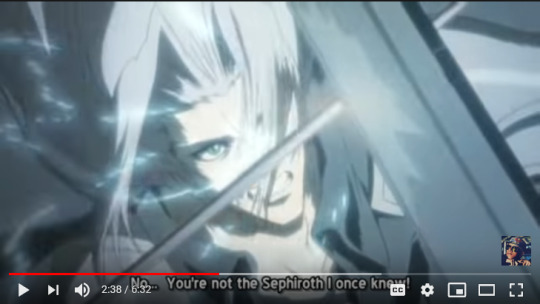

Light blue into green. Literally, you can see it happening in the actual video. This happens a second time when Sephiroth has Cloud skewed on Masamune, just more subtly:
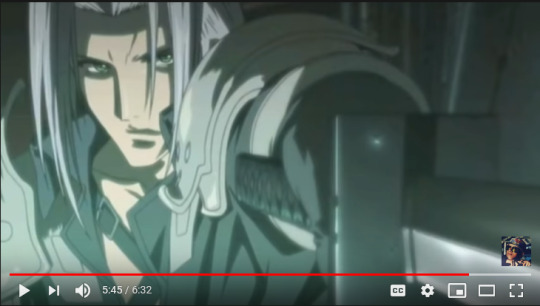

Again, light blue into green(er). Definitely something funky going on here. It goes back to light blue when Cloud tosses him away, though:

And speaking of Cloud... he, too, shows very obvious eye color change directly after this scene, as seen below:
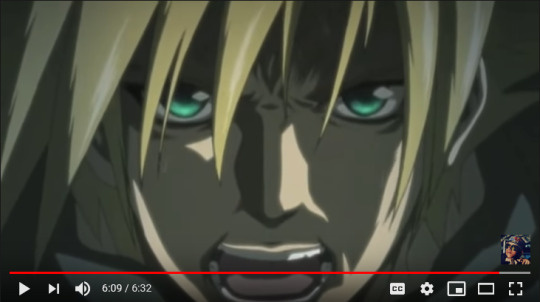
In the video they are visibly, animatedly glowing, it’s not just me discerning between two different flat shades of color. Keep in mind this is before he gets mako poisoned and Jenova-celled and whatnot, so this isn’t due to SOLDIER enhancements. What gives?
Here’s my take: it’s the Lifestream. People are made of Lifestream like everything else in in the FF7 universe, and it’s common knowledge that Lifestream/mako can do some pretty weird shenanigans. SOLDIERs are literally pumped full of the stuff and have seemingly superhuman abilities, and that’s just the lower-ranking ones. But the series has also placed a lot of emphasis on willpower, which Cloud post-experimentation struggles with due to the J-cells and stuff. A lot of people with particularly bright or “glowing” eyes have expressed an incredible amount of willpower, some of which include Cloud, Sephiroth (unsurprising), and Aerith:
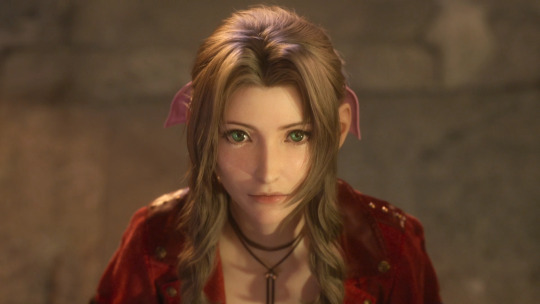
Aerith’s eyes have always been incredibly bright in the series, regardless of which game you reference. Remake especially makes this obvious, as it seems like every close-up shot of her makes her eyes the centerpiece regardless of lighting, setting, etc.:

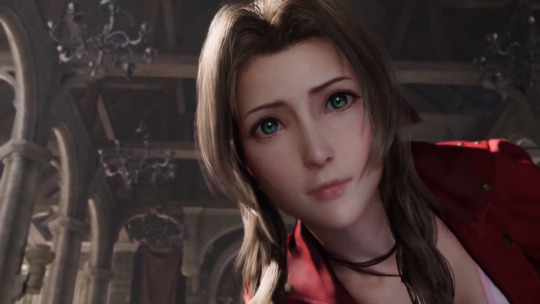
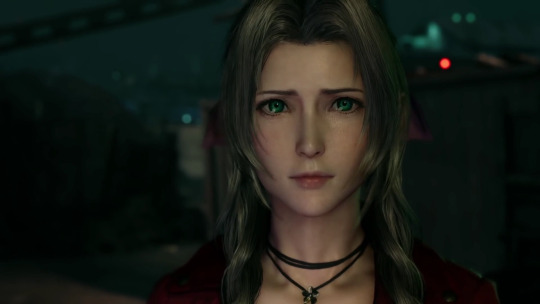
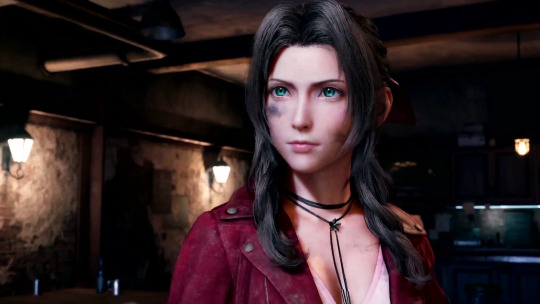

Like, seriously, they almost seem to glow they’re so bright. But here’s the kicker: Aerith is a Cetra, and the Cetra, obviously, communicate with the Planet... or, in other words, have an incredibly strong willpower that influences things. It’s been stated before by various people and media that Sephiroth and Aerith are two sides of the same coin, but not quite like this, I think. Cloud shows a similar phenomenon in his close-up shots as well, though the artificial SOLDIER glow is most likely contributing to most of it:
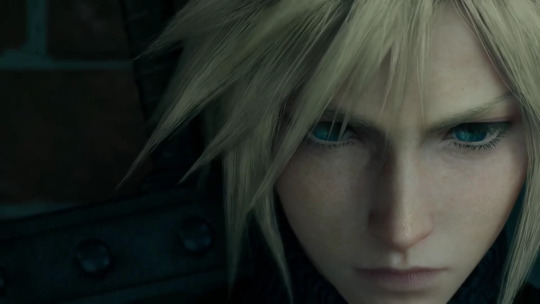
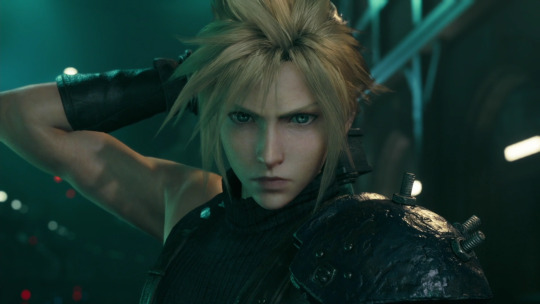
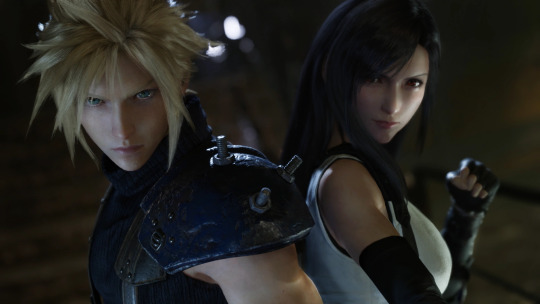


Compare these to younger Cloud in the Nibelheim flashback, when he was more innocent and had no need for incredible willpower, artificial or not:

Going back to Cloud in Last Order, the point we can make about him in particular is that when he was stabbed, literally at death’s door, he drew on his inner Lifestream for the strength to toss Sephiroth away. People have wondered for years about how this moment was even possible besides Protagonist Syndrome, and this may be the answer.
If this is the case, then this could apply to anyone: Aerith, Sephiroth, Zack, hell even Tifa seems to have slightly glowing eyes in the Remake sometimes-- and sure, it may be just the game engine making sure we can actually see their eyes in key cutscenes... but it ties into canon lore and actually makes sense, so I’m sticking with that. It’s also not a coincidence that Aerith specifically has green eyes, too, since the Lifestream in general is green-colored and whatnot.
Midpoint TL;DR: people with lots of inner willpower can call on their own Lifestream to give them strength, resulting in “glowing” or even color-changing eyes depending on how much Lifestream/mako they have in them. SOLDIERs, for example, would fall in the latter category... the most extreme being Sephiroth.
Now that's we're back at Sephiroth, another interesting point is that his eye color in Remake is consistently light blue, or some blue variation depending on the lighting, with green centers, as seen below:

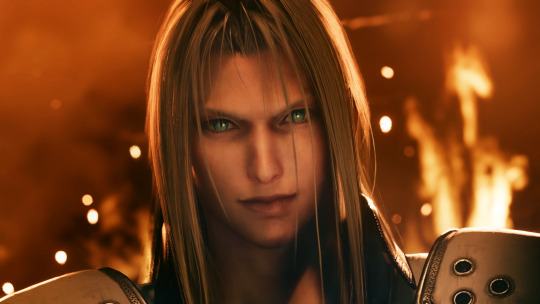

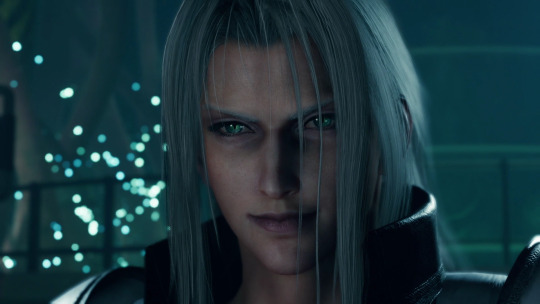
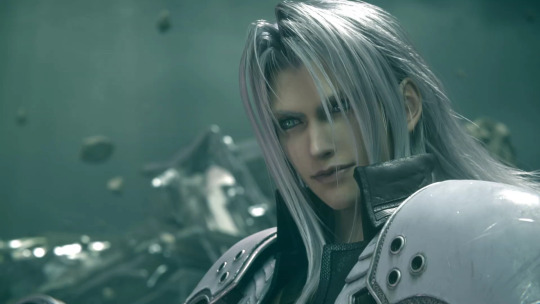

Cloud obviously shares the same eye color pattern by this point because it's implied that he has the same if not slightly more mako in him than Sephiroth, which very conveniently also equates to him having the same if not slightly more willpower than Sephiroth.
An honorable mention goes to the Remnants, since they, too, follow the light blue with green centers pattern, appearing to fluctuate between the two colors at certain times:
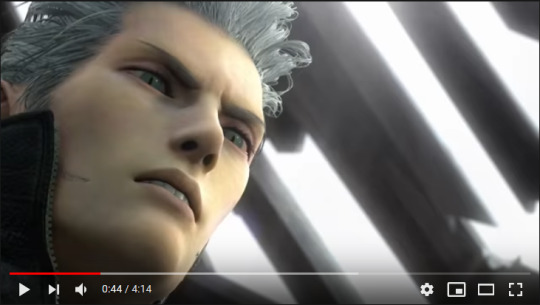
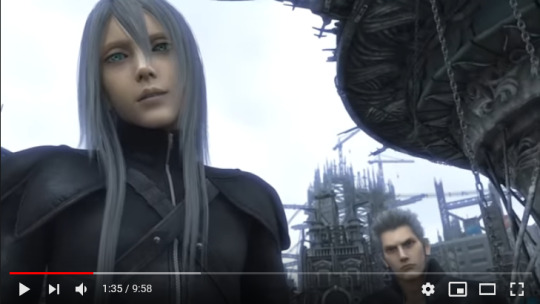

With all of that said and done, I’ll wrap this up by going through Sephiroth’s appearances in side games and other franchises as quickly as I can:
1) The Dissidia series (Dissidia, 012/Duodecim, NT, Opera Omnia) almost always portrays Sephiroth with light blue eyes in art, renders, and models, occasionally with a hint of green in them:
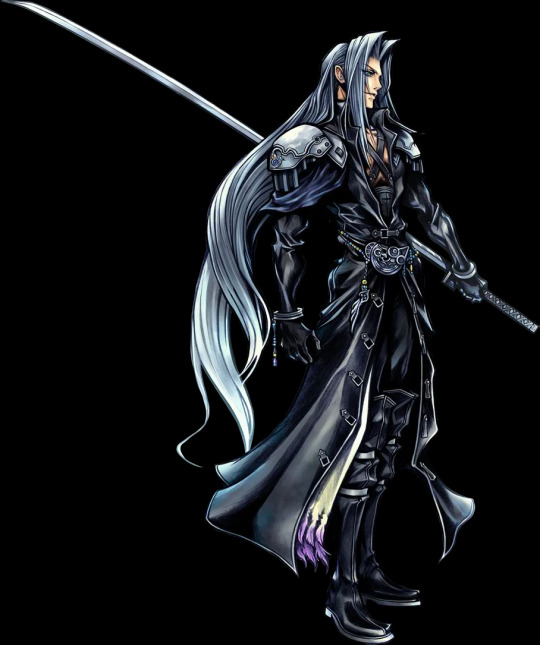



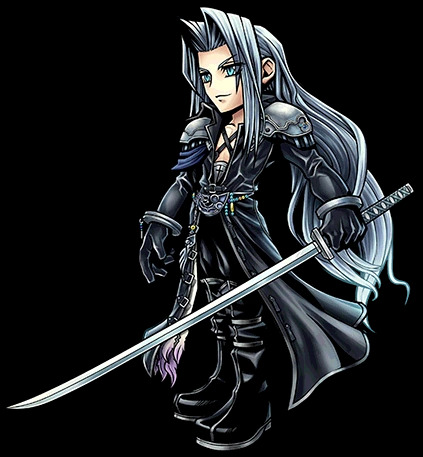

A very interesting exception is NT Sephiroth's Safer Sephiroth costume, which has completely white eyes in all three of its alts. Yes, it's basically just a cosmetic costume, but it's still worthy to note for comprehensive purposes:

2) World of Final Fantasy’s Sephiroth has light blue eyes:

3) Record Keeper Sephiroth’s sprites are very obviously based on the original FF7 official art where he has green eyes (yes, I checked the colors by hand, they're all in the greener sections of the color wheel):



4) The Kingdom Hearts series is particularly unique because it features a blue-eyed Sephiroth but with an explicit reason for it. Kingdom Hearts 1 simply says that Sephiroth is part of Cloud’s past, but Kingdom Hearts 2 literally has Cloud saying “I'll get him. This time we settle it. Me, and the one who embodies all the darkness in me.”, and then explicitly clarifying that it’s Sephiroth he’s talking about. Sephiroth even shares Cloud’s facial shape, which is particularly obvious in KH2 renders:


All other Sephiroth appearances in the KH series also feature him with blue eyes, except for any usage of material from other media.
5) Itadaki Street games feature Sephiroth with green eyes:


6) Puzzles and Dragons features a rare teal-eyed Sephiroth:
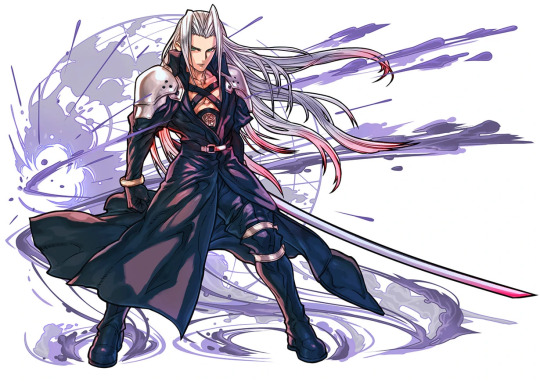
And finally 7) All other Sephiroth appearances in spinoffs and other media feature him with light blue, blue, or rare teal eyes, except for sprites, which are (most likely) reused from Record Keeper:
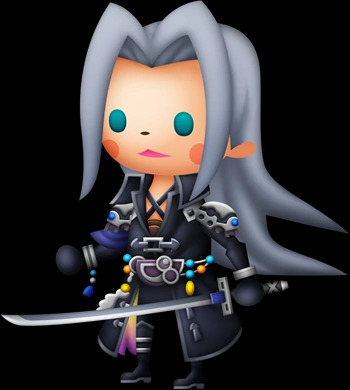


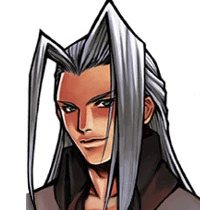
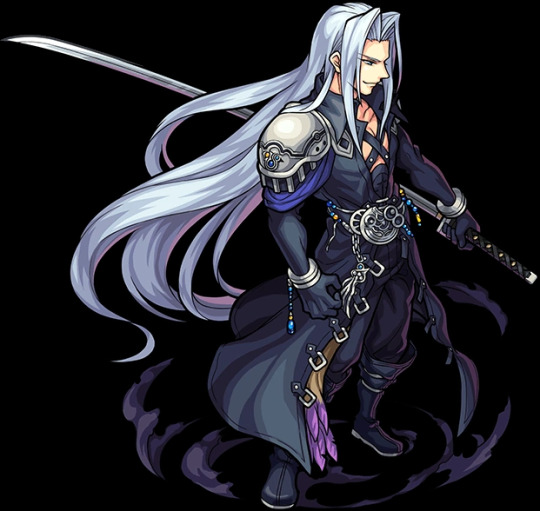
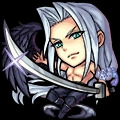

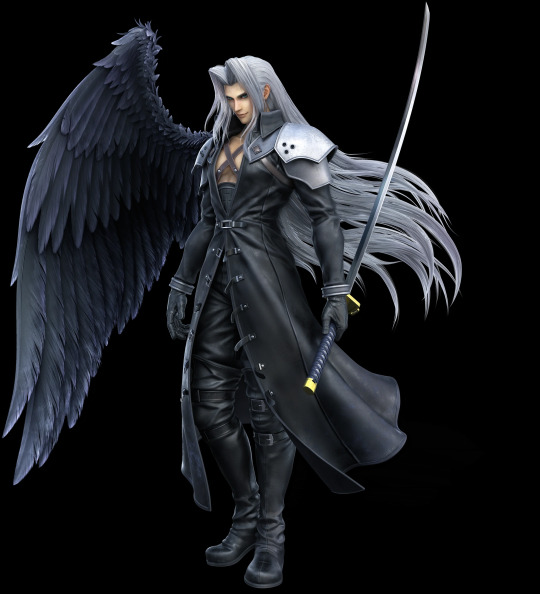
And that’s FINALLY a wrap. All my evidence for Sephiroth’s actual eye color in one place, and even a theory on why it can potentially fluctuate between that and the iconic green.
Actual TL;DR: Sephiroth’s eyes are actually light blue in 90% of his appearances, and the remaining 10% either comes from temporary green-ness or partial green-ness thanks to mako/Lifestream stuff, or spinoffs.
There is one small point I’d like to make at the end of this, and that is the remaining mystery of why Sephiroth’s pupils are even slitted and cat-like in the first place. That... is far more ambiguous in terms of evidence than the eye color. Some series, particularly the Kingdom Hearts series, have them as regular round pupils, while others sometimes if not most of the time give him the cat-like ones. I may make another in-depth analysis post trying to figure it all out, but for now I’ll say that it may just simply be a result of the Jenova cells he has or something along those lines.
If you made it this far down and didn’t just instantly scroll past my massive log of images and sundry, thank you so much for reading all of this! If you did just instantly scroll past, I don't blame you. I guess I'm in proper Sephiroth hell now, lol.
I hope you have a great day and that things turn out well for you fhjksdgfyhughuhyudfs
#final fantasy 7#ff7#if I tried to tag everything I mention in this post tumblr would probably die SO I'm only tagging the biggest and most relevant groups#final fantasy 7: advent children#last order: final fantasy 7#crisis core: final fantasy 7#before crisis: final fantasy 7#final fantasy 7 remake#dissidia final fantasy#world of final fantasy#final fantasy record keeper#kingdom hearts#itadaki street special#puzzles and dragons#sephiroth#cloud strife#aerith gainsborough#kadaj#yazoo#loz#sephiroth's eye colors#my text#can't believe how freaking LONG this is jfc#this is the most productive I've been in ages in terms of fandom
98 notes
·
View notes
Note
> Sailor Moon is perhaps the best known Magical Girl series in the West, and you can find most of the tropes that Miraculous Ladybug uses in it, but there are other titles that share a lot of the same themes. Someone ask me about them sometime, Mahou Shoujo was practically a special interest of mine for a while, I can give recommendations.
you mentioned this on a post a while ago, and i don't know if you have already given recommendations, but I've been wanting to get into mahou shoujo for a while and i don't know where to start after sailor moon. can i have some recs please
I haven't actually had an excuse to give a bunch of recs yet, so I'd be delighted to do so! Here's some titles I love:
Wedding Peach - For at least the first few episodes, maybe a while longer, this one really seems like a Sailor Moon rip-off. If you stick with it, though, you'll find out that it has a really distinct plot and personality of its own! It's also the only series I can think of that has an actual magical conceit for why no-one recognizes the Love Angels (yes, really) when they're transformed, and even dedicates an episode to making sure that bit of magic keeps working!
Tokyo Mew Mew - A pretty classic Magical Girl setup and style (teenage girl gets powers to fight a monster-of-the-week), but with a slightly more science-y twist: All of the powers come from the desire of endangered animals to survive, and the enemies are from outer space! Note: There is an older English dub of this that is apparently very, very bad. I've only ever read the manga, so I can't say one way or another, but the fact that they changed the name from Tokyo Mew Mew to Hollywood Mew Mew should provide a bit of insight there. Avoid this dub! Unfortunately, I don't know if there's a good legal option for this one, so if that's something you're firm on, you may have some looking to do.
Magical Girl Lyrical Nanoha and its sequels - A somewhat angstier Magical Girl series that pre-dates Madoka, and is incredibly well done. If you like Miraculous Ladybug AUs where Cat Noir was on Hawkmoth's side from the beginning but Ladybug manages to save him, that's pretty much what you get here, except CN is also a girl. And then it kinda happens again in the first sequel series, Nanoha A's. Not sure about the second sequel series, Nanoha StrikerS, since I only got through a few episodes of it, but I keep wanting to go back and watch the whole thing. Another one that may be difficult to find legally, especially since (IIRC) StrikerS never got an official US release.
The Pretty Cure franchise - This one's a little complicated. The first series in the Pretty Cure franchise, Futari Wa Pretty Cure/We Are Pretty Cure, does some major trope send-ups of the Magical Girl genre in general: Cure Black and Cure White do a lot more hand-to-hand combat than you usually see in Magical Girl shows (closer to typical Western superhero-style shows), and even remark at how weird the whole thing is! The shows get more typical as you go on in the franchise, but that's not necessarily a bad thing. If what you want is the classic Magical Girl formula, you can do a lot worse than a lot of Pretty Cure.
Cardcaptor Sakura - Another one that's a little bit complicated. The creators of this series, CLAMP, don't see anything wrong with fictional teacher/student relationships or really significant age gaps, several of which appear in this series (though much more prominently in the manga than the anime). Luckily(?), they're pretty much all side-relationships that don't get a whole lot of coverage, and the ones that aren't are the main character(s) crushing on older teens who at least act oblivious to it, whether or not they are. Story-wise, Cardcaptor Sakura is another one that plays with Magical Girl tropes, in that Sakura herself doesn't really get a Magical Girl transformation sequence (her best friend who has a huge crush on her makes her costumes instead), and her job is to capture/seal the escaped manifestations of magic spells into a deck of cards. This one has another dub that makes things complicated (the 90's dub as done by Nelvana (I think?) removed all the gay, of which there is plenty, and if you see the dub as presented by WB (shortened to Cardcaptors), just... stay away, stay far, far away), but I believe a better dub has been released since then. It doesn't have a lot in the way of identity shenanigans, but the endgame romance is super cute. It also has a recently released sequel series (Cardcaptor Sakura Clear Card) that I haven't watched/read yet, despite the original being one of my all time favorite manga series 😅
Saint Tail - Rounding things out with something closer to classic Magical Girl stuff, this series features a magical girl thief, who has taken it on herself to use her stage magic skills to steal back items that were wrongfully taken and return them to their rightful owners. This one puts the identity shenanigans right back where they belong, with the endgame romance between the main character and the detective who's out to capture her alter-ego. Oh, and her cute animal sidekick is a hedgehog that she rescues!
And that's what I've got for now! There's probably some newer stuff that's good, but I haven't been keeping up with anime as much recently, so all my recs are ooollllld, haha. This should still keep you occupied for a while, though!
2 notes
·
View notes
Text
What I Thought About Loki (Season One)
(Sorry this is later than it should have been. I may or may not be experiencing burnout from reviewing every episode of the gayest show Disney has ever produced)
Salutations, random people on the internet. I am an Ordinary Schmuck. I write stories and reviews and draw comics and cartoons.
Do you want to know what's fun about the Marvel Cinematic Universe? It is now officially at the point where the writers can do whatever the hell they want.
A TV series about two Avengers getting stuck in a series of sitcoms as one of them explores their personal grief? Sure.
Another series as a guy with metal bird wings fights the inner racism of his nation to take the mantel of representing the idea of what that nation should be? Why not?
A forgettable movie about a superspy and her much more mildly entertaining pretend family working together to kill the Godfather? F**king go for it (Let that be a taste for my Black Widow review in October)!
There is no limit to what you can get with these movies and shows anymore, and I personally consider that a good thing. It allows this franchise to lean further into creative insanity, thus embracing its comic roots in the process. Take Loki, for example. It is a series about an alternate version of one of Marvel's best villains bouncing around the timeline with Owen Wilson to prevent the end of the universe. It sounds like just the right amount of wackiness that it should be too good to fail.
But that's today's question: Did it fail? To find out my own answer to that, we're gonna have to dive deep into spoilers. So be wary as you continue reading.
With that said, let's review, shall we?
WHAT I LIKED
Loki Himself: Let's get this out of the way: This isn't the same Loki we've seen grow within five movies. The Loki in this series, while similar in many ways, is still his very own character. He goes through his own redemption and developments that fleshes out Loki, all through ways that, if I'm being honest with you, is done much better in six-hour-long episodes than in past films. Loki's story was already entertaining, but he didn't really grow that much aside from being this chaotic neutral character instead of this wickedly evil supervillain. Through his series, we get to see a gradual change in his personality, witnessing him understand his true nature and "glorious purpose," to the point where he's already this completely different person after one season. Large in part because of the position he's forced into.
Some fans might say that the series is less about Loki and more about the TVA. And while I can unquestionably see their point, I still believe that the TVA is the perfect way for Loki to grow. He's a character all about causing chaos and controlling others, so forcing him to work for an organization that takes that away allows Loki time to really do some introspection. Because if his tricks don't work, and his deceptions can't fool others, then who is he? Well, through this series, we see who he truly is: A character who is alone and is intended to be nothing more than a villain whose only truly selfless act got him killed in the end. Even if he wants to better himself, he can't because that "goes against the sacred timeline." Loki is a person who is destined to fail, and he gets to see it all with his own eyes by looking at what his life was meant to be and by observing what it could have been. It's all tragic and yet another example of these shows proving how they allow underdeveloped characters in the MCU a better chance to shine. Because if Loki can give even more depth to a character who's already compelling as is, then that is a feat worth admiration.
The Score: Let's give our gratitude toward Natalie Holt, who f**king killed it with this series score. Every piece she made is nothing short of glorious. Sylvie's and the TVA's themes particularly stand out, as they perfectly capture who/what they're representing. Such as how Sylvie's is big and boisterous where the TVA's sound eerie and almost unnatural. Holt also finds genius ways to implement other scores into the series, from using familiar tracks from the Thor movies to even rescoring "Ride of the Valkyries" in a way that makes a scene even more epic than it already could have been. The MCU isn't best known for its musical scores, partly because they aim to be suitable rather than memorable. But every now and again, something as spectacular as the Loki soundtrack sprinkles through the cracks of mediocrity. Making fans all the more grateful because of it.
There’s a lot of Talking: To some, this will be considered a complaint. Most fans of the MCU come for the action, comedy, and insanely lovable characters. Not so much for the dialogue and exposition. That being said, I consider all of the talking to be one of Loki's best features. All the background information about the TVA added with the character's backstories fascinates me, making me enthusiastic about learning more. Not everyone else will be as interested in lore and world-building as others, but just because something doesn't grab you, in particular, doesn't mean it isn't appealing at all. Case in point: There's a reason why the Five Nights at Freddy's franchise has lasted as long as it has, and it's not entirely because of how "scary" it is.
There's also the fact that most of the dialogue in Loki is highly engaging. I'll admit, some scenes do drag a bit. However, every line is delivered so well that I'm more likely to hang on to every word when characters simply have honest conversations with each other. And if I can be entertained by Loki talking with Morbius about jetskis, then I know a show is doing at least something right.
It’s Funny: This shouldn't be a surprise. The MCU is well-known for its quippy humor in the direct acknowledgment that it doesn't take itself too seriously. With that said, it is clear which movies and shows are intended to be taken seriously, while others are meant to be comedies. Loki tries to be a bit of both. There are some heavy scenes that impact the characters, and probably even some fans, due to how well-acted and professionally written they can be. However, this is also a series about a Norse god traveling through time to deal with alternate versions of himself, with one of them being an alligator. I'd personally consider it a crime against storytelling to not make it funny. Thankfully, the writers aren't idiots and know to make the series fun with a few flawlessly timed and delivered jokes that never really take away from the few good grim moments that actually work.
It Kept Me Surprised: About everything I appreciate about Loki, the fact that I could never really tell what direction it was going is what I consider its absolute best feature. Every time I think I knew what was going to happen, there was always this one big twist that heavily subverted any and every one of my expectations. Such as how each time I thought I knew who the big bad was in this series, it turns out that there was an even worse threat built up in the background. The best part is that these twists aren't meant for shock value. It's always supposed to drive the story forward, and on a rewatch, you can always tell how the seeds have been planted for making each surprise work. It's good that it kept fans guessing, as being predictable and expected would probably be the worst path to take when making a series about Loki, a character who's all about trickery and deception. So bonus points for being in line with the character.
The TVA: You can complain all you want about how the show is more about the TVA than it is Loki, but you can't deny how the organization in question is a solid addition to the MCU. Initially, it was entertaining to see Loki of all characters be taken aback by how the whole process works. And it was worth a chuckle seeing Infinity Stones, the most powerful objects in the universe, get treated as paperweights. However, as the season continues and we learn about the TVA, the writers show that their intention is to try and write a message about freedom vs. control. We've seen this before in movies like Captain America: The Winter Soldier or Captain America: Civil War, but with those films, it always felt like the writers were leaning more towards one answer instead of making it obscure over which decision is correct. This is why I enjoy the fact that Loki went on saying that there really is no right answer for this scenario. If the TVA doesn't prune variants, it could result in utter chaos and destruction that no one from any timeline can prepare themselves for. But when they do prune variants along with their timelines, it takes away all free will, forcing people to be someone they probably don't even want to be. It's a situation where there really is no middle ground. Even if you bring up how people could erase timelines more destructive than others, that still takes away free will on top of how there's no unbiased way of deciding which timelines are better or worse. And the series found a brilliant way to explain this moral: The season starts by showing how the TVA is necessary, to later point out how there are flaws and evil secrets within it, and ends things with the revelation that there are consequences without the TVA keeping the timeline in check. It's an epic showcase of fantastic ideas met with exquisite execution that I can't help but give my seal of approval to.
Miss Minutes: Not much to say. This was just a cute character, and I love that Tara Strong, one of the most popular voice actors, basically plays a role in the MCU now.
Justifying Avengers: Endgame: Smartest. Decision. This series. Made. Bar none.
Because when you establish that the main plot is about a character getting arrested for f**king over the timeline, you're immediately going to get people questioning, "Why do the Avengers get off scot-free?" So by quickly explaining how their time-traveling antics were supposed to happen, it negates every one of those complaints...or most of them. There are probably still a-holes who are poking holes in that logic, but they're not the ones writing this review, so f**k them.
Mobius: I didn't really expect Owen Wilson to do that good of a job in Loki. Primarily due to how the Cars franchise discredits him as a professional actor for...forever. With that said, Owen Wilson's Mobius might just be one of the most entertaining characters in the series. Yes, even more so than Loki himself. Mobius acts as the perfect straight man to Loki's antics, what with being so familiar with the supposed god of mischief through past variations of him. Because of that, it's always a blast seeing these two bounce off one another through Loki trying to trick a Loki expert, and said expert even deceiving Loki at times. Also, on his own, Mobius is still pretty fun. He has this sort of witty energy that's often present in Phil Coulson (Love that character too, BTW), but thanks to Owen Wilson's quirks in his acting, there's a lot more energy to Mobius than one would find in Coulson. As well as a tad bit of tragedy because of Mobius being a variant and having no clue what his life used to be. It's a lot to unpack and is impressively written, added to how it's Owen Wilson who helps make the character work as well as he did. Cars may not have done much for his career, but Loki sure as hell showed his strengths.
Ravonna Renslayer: Probably the least entertaining character, but definitely one of the most intriguing. At least to me.
Ravonna is a character who is so steadfast in her believes that she refuses to accept that she may be wrong. Without the proper writing, someone like Ravonna could tick off (ha) certain people. Personally, I believe that Ravonna is written well enough where even though I disagree with her belief, I can understand where she's coming from. She's done so much for the TVA, bringing an end to so many variants and timelines that she can't accept that it was all for nothing. In short, Ravonna represents the control side of the freedom vs. control theme that the writers are pushing. Her presence is necessary while still being an appealing character instead of a plot device. Again, at least to me.
Hunter B-15: I have no strong feelings one way or another towards B-15's personality, but I will admit that I love the expectation-subversion done with her. She has this air of someone who's like, "I'm this by-the-books badass cop, and I will only warm up to this cocky rookie after several instances of them proving themselves." That's...technically not B-15. She's the first to see Loki isn't that bad, but only because B-15 is the first in the main cast to learn the hidden vile present in the TVA. It makes her change in point of view more believable than how writers usually work a character like hers, on top of adding a new type of engaging motivation for why she fights. I may not particularly enjoy her personality, but I do love her contributions.
Loki Watching What His Life Could Have Been: This was a brilliant decision by the writers. It's basically having Loki speedrun his own character development through witnessing what he could have gone through and seeing the person he's meant to be, providing a decent explanation for why he decides to work for the TVA. And on the plus side, Tom Hiddleston did a fantastic job at portraying the right emotions the character would have through a moment like this. Such as grief, tearful mirth, and borderline shock and horror. It's a scene that no other character could go through, as no one but Loki needed a wake-up call for who he truly is. This series might heavily focus on the TVA, but scenes like this prove just who's the star of the show.
Loki Causing Mischief in Pompeii: I just really love this scene. It's so chaotic and hilarious, all heavily carried by the fact that you can tell that Tom Hiddleston is having the time of his damn life being this character. What more can I say about it.
Sylvie: The first of many surprises this season offered, and boy was she a great one.
Despite being an alternate version of Loki, I do appreciate that Sylvie's her own character and not just "Loki, but with boobs." She still has the charm and charisma, but she also comes across as more hardened and intelligent when compared to the mischievous prick we've grown to love. A large part of that is due to her backstory, which might just be the most tragic one these movies and shows have ever made. Sylvie got taken away when she was a little girl, losing everything she knew and loved, and it was all for something that the people who arrested her don't even remember. How sad is that? The fact that her life got permanently screwed over, leaving zero impact on the people responsible for it. As badass as it is to hear her say she grew up at the ends of a thousand worlds (that's an album title if I ever heard one), it really is depressing to know what she went through. It also makes her the perfect candidate to represent the freedom side of the freedom vs. control argument. Because she's absolutely going to want to fight to put an end to the people who decide how the lives of trillions should be. Those same people took everything from Sylvie, and if I were in her position, I'd probably do the same thing. Of course, we all know the consequences that come from this, and people might criticize Sylvie the same way they complain about Thor and Star Lord for screwing over the universe in Avengers: Infinity War. But here's the thing: Sylvie's goals are driven by vengeance, which can blind people from any other alternatives. Meaning her killing He Who Remains is less of a story flaw and more of a character flaw. It may be a bad decision, but that's for Season Two Sylvie to figure out. For now, I'll just appreciate the well-written and highly compelling character we got this season and eagerly wait as we see what happens next with her.
The Oneshot in Episode Three: Not as epic as the hallway scene in Daredevil, but I do find it impressive that it tries to combine real effects, fighting, and CGI in a way where it's all convincing enough.
Lady Sif Kicking Loki in the D**k: This is a scene that makes me realize why I love this series. At first, I laugh at Loki being stuck in a time loop where Lady Sif kicks him in the d**k over and over again. But a few scenes later, this setup actually works as a character moment that explains why Loki does the things he does.
This series crafted phenomenal character development through Loki getting kicked in the d**k by the most underrated badass of the Marvel Cinematic Universe. It's a perfect balance of comedy and drama that not every story can nail, yet Loki seemed like it did with very little effort.
Classic Loki: This variant shows the true tragedy of being Loki. The only way to survive is to live in isolation, far away from everything and everyone he loves, only to end up having his one good deed result in his death anyways. Classic Loki is definitive proof that no matter what face they have, Lokis never gets happy endings. They're destined to lose, but at least this version knows that if you're going out, you're going out big. And at least he got to go out with a mischievous laugh.
(Plus, the fact that he's wearing Loki's first costume from the comics is a pretty cute callback).
Alligator Loki: Alligator Loki is surprisingly adorable, and if you know me, you know that I can't resist cute s**t. It's not in my nature.
Loki on Loki Violence: If you thought Loki going ham in Pompeii was chaotic, that was nothing to this scene. Because watching these Lokis backstab one another, to full-on murdering each other, is a moment that is best described as pure, unadulterated chaos. And I. Loved. Every. Second of it.
The Opening Logo for the Season Finale: I'm still not that big of a fan of the opening fanfare playing for each episode, but I will admit that it was a cool feature to play vocal clips of famous quotes when the corresponding character appears. It's a great way of showing the chaos of how the "sacred timeline" works without having it to be explained further.
The Citadel: I adore the set design of the Citadel. So much history and backstory shine through the state of every room the characters walk into. You get a perfect picture of what exactly happened, but seeing how ninety percent of the place is in shambles, it's pretty evident that not everything turned out peachy keen. And as a personal note, my favorite aspect of the Citadel is the yellow cracks in the walls. It looks as though reality itself is cracking apart, which is pretty fitting when considering where the Citadel actually is.
He Who Remains: This man. I. Love. This man.
I love this man for two reasons.
A. He's a ton of fun. Credit to that goes to the performance delivered by Jonathon Majors. Not only is it apparent that Majors is having a blast, but he does a great job at conveying how He Who Remains is a strategic individual but is still very much off his rocker. These villains are always my favorite due to how much of a blast it is seeing someone with high intelligence just embracing their own insanity. If you ask me, personalities are always essential for villains. Because even when they have the generic plot to rule everything around them, you're at least going to remember who they are for how entertaining they were. Thankfully He Who Remains has that entertainment value, as it makes me really excited for his eventual return, whether it'd be strictly through Loki Season Two or perhaps future movies.
And B. He Who Remains is a fantastic foil for Loki. He Who Remains is everything Loki wishes he could have been, causing so much death, destruction, and chaos to the multiverse. The important factor is that he does it all through order and control. The one thing Loki despises, and He Who Remains uses it to his advantage. I feel like that's what makes him the perfect antagonist to Loki, thanks to him winning the game by not playing it. I would love it if He Who Remains makes further appearances in future movies and shows, especially given how he's hinted to be Kane the Conqueror, but if he's only the main antagonist in Loki, I'm still all for it. He was a great character in his short time on screen, and I can't wait to see what happens next with him.
WHAT I DISLIKED
Revealing that Loki was D.B. Cooper: A cute scene, but it's really unnecessary. It adds nothing to the plot, and I feel like if it was cut out entirely, it wouldn't have been the end of the world...Yeah. That's it.
That's my one and only complaint about this season.
Maybe some scenes drag a bit, and I guess Episode Three is kind of the weakest, but there's not really anything that this series does poorly that warrants an in-depth complaint.
Nope.
Nothing at all...
…
...
...I'm not touching that "controversy" of Loki falling for Sylvie instead of Mobius. That's a situation where there are no winners.
Only losers.
Exclusively losers.
Other than that, this season was amazing!
IN CONCLUSION
I'd give the first season of Loki a well-earned A, with a 9.5 through my usual MCU ranking system. It turns out, it really is the best type of wackiness that was just too good to fail. The characters are fun and likable, the comedy and drama worked excellently, and the expansive world-building made me really intrigued with the more we learned. It's hard to say if Season Two will keep this momentum, but that's for the future to figure out. For now, let's just sit back and enjoy the chaos.
(Now, if you don't excuse me, I have to figure out how to review Marvel's What If...)
#marvel cinematic universe#mcu reviews#loki tv series#loki#sylvie#mobius#ravonna renslayer#hunter b 15#classic loki#alligator loki#he who remains#kang the conqueror#what i thought about
10 notes
·
View notes
Note
I read through your post regarding Mine’s practically undeniable attraction to Daigo, and I was a bit surprised to see that the phrasing of intense love had never died down in official RGG works regardless of how many years have passed from the third game. Something unsurprising, however, is that I had seen users on the Yakuza subreddit claiming that the love comment was “up to interpretation as to what kind of love it is was.” I just think it’s extremely fishy how they say that, and then choose to believe it’s platonic while beating away any belief that it’s romantic. You really hit the nail on the head when talking about the denial and rejection people have towards it. And calling others fujoshi for seeing it as non-platonic? Another non-surprise.
-
I was wondering if you had any thoughts on other characters. Like maybe Majima? Your post was a really good read, and it just had me curious about anything else. Really wish Mine could have been around in more games as it would have been interesting to see what else they could have done with his character.
The reason it came as a surprise that the studio never let up on this aspect of Mine to me—I don't know if this is the case for you—was because it was a clear indication that their characterization of Mine was in earnest. They made it impossible to miss (well, to whom it may concern) and kept it that way. That isn't something I personally feel the studio has been able to replicate since then. Which isn't to say I'm looking to downplay the existence of other LGBT characters or the unique connection fans may feel towards characters they interpret as LGBT, but for me, when it comes to discussing LGBT themes and interpretations in this series, I'll admit outright that I don't have any interest in putting my thoughts out there on any serious level until and unless the studio can bring themselves to say it with their whole chest like they did with Mine. I've said everything I feel needed to be said it comes to that.
Hot on the heels of RGGO's Yakuza 3 "memorial" this month where no one so much as breathed a syllable of Mine's name, I definitely think he's underrepresented. Even so, the reason I was able to make the post in the first place is because the content we do get is, if nothing else, extremely consistent. The phrasing of intense love never died down, like you said, and neither has the quality of his writing as a character (which remains some of the best in the series), because the studio's laser-focus on what Mine's essence as a character is has never changed. (Tangentially, it's unfortunate the team working on RGGO will probably never reach the level of enthusiasm they had for Ichiban or Ryuji's stories again, since Mine was also in consideration to be a protagonist at one point.)
By the same token, that's why I don't know when the next time I can put out something that's up to the same standard as "the Mine essay" will be. It might look well-put-together (or so I hope!) but it was actually 100% off-the-cuff. I believe there was a small "influx" of edits to Mine's article and if I recall, someone was bothering my friend Ada @okitanoniisan (love u sorry to ping re: this particular topic) about it around the same time. I happened to have a point I wanted to make that was fresh on my mind since I'd been translating Mine's RGGO content and I'd finished Y3R (in one sitting!) with Ada not too long before, and I happened to have the sources to back that point up. That's all there is to it. At the same time, it wasn't only an unsolicited, raw, and mostly uncensored dive into an aspect of the franchise that's often overlooked. Anyone that talks to me regularly can attest to to the fact I'll bang one of those out at the drop of a hat. It was both that and something I knew for certain that people might take interest in, positive or negative or maybe out of curiosity.
It's not only things like how it's often difficult for me to gauge whether there's an audience for the topics I genuinely want to talk about, or how when I know there is one (as is the case for fan-favorites like Majima) I often feel like anything I could say has been said already, but going back to Mine being underrepresented as a character, the fact he was never given the chance to evolve is exactly, and kind of tragically, what makes it possible for me to make authoritative statements about him as a character. I don't have moments where I think I'm "missing something." I don't ever feel like I need to review an insurmountable amount of content to begin to make a statement (or even to find something to make a statement about). I don't have to be held accountable for how I translate or interpret things on a larger scale.
Which is to say I'm not sure where I want to take this blog, but I don't see that type of long-form content (or much of any content) in its near feature. I just don't know what there's an audience out there for and I'm not in a position where I can take a chance on potentially over-investing my time and energy into something like that.
#asks#yakuza#yakuza 3#yoshitaka mine#and yeah the subreddit as well as a subset of the fanbase in general are a little. well. Like That#i did have plans to touch on sawashiro's characterization in ylad#mainly from a localization perspective#but i also wanted to take a look at one specific aspect of his storyline from a leftist perspective sometime as weird as that might sound#and i wanted to revisit a thread i made on twitter a long time ago about mine's Very Unique Slightly Misunderstood perception of kiryu#anyway this was a pretty straightforward question that definitely did not need this roundabout of an answer but yeah#best chance of getting an essay out of me is by talking to me on discord and hoping we stumble onto a topic i have a lot to say on tbh
19 notes
·
View notes
Note
How would you describe the relationship between each respective goggleboy and 'rival'? Ive seen different interpretations but im curious what you think! Not to mention that the fans are sometimes arguing over who the 'rival' actually is, like with Daisuke where some people say its Ken and others say its Takeru. (I dont think there are actual rivals in the show, except for maybe Manga!Kiriha who outright says he will be just that with Taiki.)
One thing to keep in mind is that the word "rival" has kind of integrated itself into anime lingo as a full-on English loanword, so it comes from expectations of anime tropes more than anything. While even official staff has used that word in talking about Digimon, as you say, it never really fit to begin with, because not only has Digimon TV anime never been a particularly conventional shounen series in many ways, that term was also mostly coined in light of series where that term made a lot more sense. As in, they were more likely to be actually competing over something (in sports, or something tournament-based like card games); in that sense, a "rival" would be someone who might be antagonistic by being on the other side of the field, but would have a mutually positive relationship with the other person overall because the competitiveness would keep both of them on their toes and allow both of them to improve together. Digimon is not the first time this term has started getting overapplied to contexts where it doesn't really fit at all (it's been going on in Super Sentai for years), so people generally have a greater perception of it broadly meaning "two characters who have differing opinions on how something should be done due to their differing personalities, and sometimes fight over it", but in Digimon especially, it really does seem like trying to smash a square peg into a round hole.
The short answer: Xros Wars is probably the only one you can make a real argument for.
The long answer, in detail:
Adventure: I cannot emphasize enough that Adventure, being a series that was really big on that whole trope subversion thing, is a series that casts the trope of "rivalry" as "getting in a lot of fights" as a bad thing -- it's actually pretty unsubtle about it, because the word "rival" itself is explicitly used in Adventure episode 44, by Jureimon trying to manipulate Yamato. Or, in other words, "hey, if you saw someone who's supposed to be your supportive friend as someone you had to constantly compete against for no good reason, wouldn't that be really messed up?" Adventure does not even bother with or remotely believe in the idea that fighting somehow is a sign of how good friends you are, at least, not as long as that fighting is a sign of genuine hostility and refusal to communicate (which is why Yamato punching Taichi in 02 doesn't count). Every time Taichi and Yamato got in a fight back in Adventure, it was heated and ugly, and everyone in their presence was horrified, and once they sorted out their issues in Adventure, their appearances in 02 and Kizuna involved properly talking things out and making an active attempt to understand each other's feelings. There's a bit of bickering between them due to said opposing personalities, but it's never over anything serious (see the contrast in Kizuna between them having a bit of a minor row at the beginning, but high-fiving right after and spending the rest of the movie practically counseling each other).
02: Straight-up does not exist. Daisuke may have seen Takeru in that way due to the Hikari issue at first, but he was really running in circles getting absolutely nowhere about it, Takeru was mostly like "okay, you have fun with that," their only major argument about anything was the very serious issue in 02 episode 11, and it still resulted in Daisuke trying to understand Takeru's feelings. I think all of it boils down to Daisuke himself just not having that kind of personality to begin with, because he's friendly and supportive before anything else, and the whole thing with Takeru became a non-issue after a fashion (way before we even get into Kizuna, at that). Ken has the word "rival" sometimes applied to him in official franchise media, but nobody ever believes it. Sure, Daisuke and Ken have fairly complementary personalities, but they seem to both be aware of this fact and actively using it to help each other. It's very, very, very hard to imagine them ever getting into any kind of fight the way Taichi and Yamato used to in Adventure. It's just not happening! They're "best friends" who enjoy each other's company and actively hang out, and...yeah, that's it.
Tamers: Also does not exist! I know a lot of people really try to say it's Ruki because she's the one with the lone-wolf attitude and aggravated Takato at first, but my impression of Takato's attitude with her wasn't out of any competition but more that he'd like it if she didn't try to pick fights with him. Which she does actually stop after a while, mind you, and you could even make an argument that she's more of a foil to Jian than Takato, because Jian's the one who was completely pacifist at first, with Takato caught in the middle. In the end, Ruki never actually attains a particularly close relationship with Takato compared to Jian, nor does she really keep up a particular competitive streak with Takato; she kind of pops in and out at her leisure because of her more independent streak, and Jian ends up more of Takato's right-hand man (which is why the franchise presumably picks him as the secondary character to feature whenever they do "secondary characters"), but neither Takato nor Jian are prone to conflict and the entire trope is just fundamentally absent. The Tamers trio, is, ultimately, a trio.
Frontier: Takuya and Kouji are probably the first pair to really look like a proper execution of the trope, and at the very least they align pretty perfectly to how it's known in Sentai: a more hot-headed, aggressive lead with a more cool-headed and cynical right-hand man, where they end up often prone to conflict over dispute on how to best lead the team. However, while it's much more of a conventional execution than Adventure (since Adventure had Yamato actually be more prone to being an emotional fuse bomb whereas Taichi was often too chill more than anything), there being any conflict isn’t gone into that deeply beyond just "their personalities are complementary", and in that sense it's not far off from Adventure itself.
Savers: The series kind of baits you into thinking it might go this way when Nanami taunts Tohma about how he had to resort to a Masaru-esque tactic to beat her (it's one of its early red herrings about Tohma supposedly betraying the group), and it does have traces at the start because of how blatant of a foil Tohma is to Masaru, but one thing important to consider is that while the "rivalry" of what's being competed over is barely even relevant in most Digimon series to begin with, Masaru and Tohma don't even have a "group" to lead -- they're the employees under DATS who are being given orders from above, and are dealing with situations as they come. Masaru ends up leading the charge a bit, but he's not actually a leader in any shape or form, and Savers is more of a story of Masaru's coming-of-age than anything else, so while the series mostly has to do with his personal philosophy more than Tohma's, it ultimately lets the two of them pursue their lives their own ways. Masaru's worst bout of infamous anger is at being hurt over Tohma's apparent betrayal, not against him personally.
Xros Wars: I would say this is the only series to date where the term "rivals" properly applies, and it's because they're fighting over something concrete: the Code Crowns, and eventually Digital World territory. So in this case, for the first two parts, the answer is obviously Kiriha; Nene was a rival at first, but after various events happened she allied with Xros Heart early into Death Generals, and while Taiki and Kiriha had a relationship of mutual respect, Kiriha still considered him an opponent over what they were competing for until eventually the Xros Heart United Army fully came into formation. In the manga version, Kiriha does invoke the word "rival" in the above sense of competing to polish one's skills, but ironically, its version of the Death Generals arc involves them being much more in-tune with the same goals, so it might actually apply less because Taiki kind of responds with "uh, sure...?" since he's not nearly as interested in self-improvement. In Hunters, while it initially seems like it might be Yuu, the answer is really Ryouma, and note that Ryouma never really forms a particularly close relationship with Tagiru; it's just that he's the person most at the forefront for competing with Tagiru in the Hunt, to the point he's the first person chosen to wield the Brave Snatcher and turns out to be a bit of a foil for Tagiru in terms of actually having admired Taiki this whole time.
Appmon: Also does not exist. Rei tried to do the whole schtick in terms of competing for the Seven Code Appmon at first, but Haru was having none of that and immediately reached out to him emotionally, worrying about his welfare, and although Rei had a bit of a detached relationship with the other Appli Drivers thereafter, it really was friendly more than anything, just a bit awkward. Haru and Yuujin aren't even on the table, since their relationship is "best friends" akin to Daisuke and Ken.
Adventure: reboot: Also does not exist, considering that Taichi and Yamato bickering over the best way to approach things is limited to the very beginning of the series (and one of those times was with Yamato and Sora, not Yamato and Taichi, at that). In fact, I think most of these kids have been acting separately for most of the series anyway...?
23 notes
·
View notes
Text
What’s Coming: Elden Ring
whttps://www.youtube.com/watch?v=rHoDGkpktPE&ab_channel=IGN
The Reveal Trailer for Elden Ring by FromSoftware, from IGN on Youtube.
For this week, we’re going to be looking at one of my favorite game companies of my young adulthood, FromSoftware. They’re best known for their critically acclaimed Dark Souls series, which is universally hailed as one of the best game series of all time. Its dark dingy style mixed with its brutally hard but satisfying gameplay have captured the hearts of some of the most hardcore gamers of this generation, and its new game Elden Ring is set to surpass what has come before it.
https://www.youtube.com/watch?v=FV3Np98b1TY&ab_channel=whycreate
George RRR Martin’s role in Elden Ring from whycreate on Youtube.
One of the major draws to this entry is the partnership with George R.R. Martin, who will be providing the story and lore to the game. In previous game entries, the story took a backseat to its gameplay and only players who pay attention to the details will fully grasp the scope of the stories that are presented within them. In fact, most players will go through FromSoftware’s games without knowing a single thing about why they’re doing what they’re doing, or the world that surrounds them. But with this powerhouse writer at the helm, I have a feeling most won’t be able to avoid looking into the lore that will be presented.
https://www.youtube.com/watch?v=xHzJG1hHTdU&ab_channel=AegonTargaryen
George R.R. Martin on Elden Ring from wttwchicago, posted by Aegon Targaryen on Youtube.
This interview about the game with writer George R.R. Martin can’t help but make me excited for the game. Listening to him talk about working with Miyazaki, the man behind the game, and how he crafted an intricate game world already proves that the story will be more massive than any game that came before it. Seeing him get giddy about looking at the first pieces of gameplay and the finished product is contagious.
https://www.youtube.com/watch?v=E3Huy2cdih0&ab_channel=BANDAINAMCOEntertainmentEurope
ELDEN RING - Official Gameplay Reveal from Bandi Namco Entertainment Europe on Youtube.
When looking at the gameplay, it looks like it will most closely resemble the Dark Souls franchise whose game released most recently in 2016 with Dark Souls III. Providing the player with a vast array of combat choices from magic to using the biggest sword you’re ever seen. That was one of the main draws of the franchise, the use of variety in the gameplay that will provide a player with a strong sense of replay ability. And it looks like as opposed to the mostly linear gameplay of the previous games, Elden Ring will be focusing on open world gameplay and horseback gameplay that can add a whole other layer of complexity to the game.
https://www.reddit.com/r/Eldenring/comments/hf3ht6/elden_rings_development_cycle_should_be_as_long/
Elden Ring's development cycle should be as long as possible by u/JP_Eggy on Reddit
As far as the development on the game goes, I think that this is a very good example of how to provide updates and handle development within a large game company. There was never really a release date planned until much later in development, much after the game was shown off, which doesn’t bind the employees at the company into a strict timeframe that will push workers into the dreaded crunch time. I also believe the lack of PR referring to the release is a good idea too, people already know the game is coming out and backing the developers into a corner with promised features and release windows is usually never a good idea. They’ve only released what they have done, showing rather than telling. Of course, since there’s not much information on the actual development conditions, we don’t know if the work environment is without fault, but from the surface level FromSoftware seems to have a great handle on it.
This game is one of my personal most anticipated games ever. After finishing most of the other Dark Souls games, I’m itching to see what they’re cooking up for this massive title. And from the people behind the helm to the professionally done public presence, I have full faith that this game will meet my expectations and more.
2 notes
·
View notes